circular economy
description: regenerative system in which resource input and waste, emission, and energy leakage, are minimised
69 results
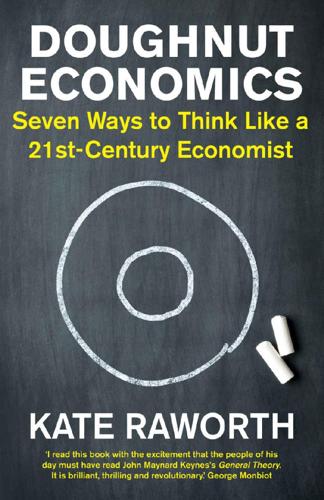
Doughnut Economics: Seven Ways to Think Like a 21st-Century Economist
by
Kate Raworth
Published 22 Mar 2017
Webster, K. (2015) The Circular Economy: A Wealth of Flows. Isle of Wight: Ellen McArthur Foundation. 23. Ellen McArthur Foundation (2012) Towards the Circular Economy, Isle of Wight: Ellen McArthur Foundation, available at: http://www.ellenmacarthurfoundation.org/assets/downloads/publications/Ellen-MacArthur-Foundation-Towards-the-Circular-Economy-vol.1.pdf 24. Braungart, M. and McDonough, W. (2009) Cradle to Cradle: Remaking the Way We Make Things. London: Vintage Books. 25. Ellen MacArthur Foundation (2012) In-depth: mobile phones. http://www.ellenmacarthurfoundation.org/circular-economy/interactive-diagram/in-depth-mobile-phones 26.
…
, Guardian, 24 November 2012, available at: https://www.theguardian.com/environment/2012/nov/24/growing-food-in-the-desert-crisis 36. Lacy, P. and Rutqvist, J. (2015) Waste to Wealth: The Circular Economy Advantage. New York: Palgrave Macmillan, pp. 79–80. 37. Muirhead, S. and Zimmermann, L. (2015) ‘Open Source Circular Economy’, The Disruptive Innovation Festival 2015. 38. Open Source Circular Economy: mission statement. https://oscedays.org/open-source-circular-economy-mission-statement/ 39. Personal communication with Sam Muirhead, 27 January 2016. 40. Apertuso https://www.apertus.org/ 41. OSVehicle https://www.osvehicle.com/ 42.
…
Fiscal reforms for an inclusive, circular economy. http://ex-tax.com/files/4314/1693/7138/The_Extax_Project_New_Era_New_Plan_report.pdf 56. Crawford, K. et al. (2014) Demolition or Refurbishment of Social Housing? A review of the evidence. London: UCL Urban Lab and Engineering Exchange, available at: http://www.engineering.ucl.ac.uk/engineering-exchange/files/2014/10/Report-Refurbishment-Demolition-Social-Housing.pdf 57. Wijkman, A. and Skanberg, K. (2015) The Circular Economy and Benefits for Society. Club of Rome, available at: http://www.clubofrome.org/wp-content/uploads/2016/03/The-Circular-Economy-and-Benefits-for-Society.pdf 58.
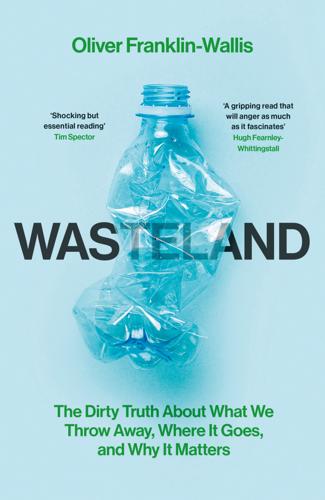
Wasteland: The Dirty Truth About What We Throw Away, Where It Goes, and Why It Matters
by
Oliver Franklin-Wallis
Published 21 Jun 2023
There, as suited executives from the big waste firms gave talks about the circular economy while their stalls handed out single-use plastic tat like candy, and gruff waste dealers admired massive German-made shredders and track shovels like toddlers in a toy shop, I spotted a small stall, barely big enough to contain the bright pink donations box at its centre. There I found Oleksii, the founder and director of Pink Elephant Recycling, a textile recycler based in Leicester. A serious man with a square face, framed with half-rimmed glasses, he is a passionate believer in the circular economy, and in the value of reuse. He is also, unlike many, totally open about what actually happens to our donations.
…
‘We need to have a new culture around fashion. We should push for ownership, rather than keeping up with trends.’ To Yayra, Kantamanto is not just a warning, something for the West to feel guilty about and greenwash over. Look closely, and it’s a model of what the circular economy could look like: reusing what we have already made. ‘We don’t need new. If we are able to create a proper circular economy when it comes to clothing, we wouldn’t need to produce more clothes for the next thirty years,’ he says. ‘There are enough clothes produced already.’ I. Although if you can’t sell it, is it worth that much? PART TWO FOUL 6 THE CURE FOR CHOLERA ‘The sewer is the conscience of the city’ —VICTOR HUGO, Les Misérables This might all sound bleak, but we’ve solved a waste crisis before.
…
(A few admirable groups, such as The Ocean Cleanup, are actually fishing plastic out of the ocean and rivers, though their efforts to date are tiny compared with the size of the problem.) Whenever I see big brands discussing the circular economy, I think back to something that Oleksii told me at Pink Recycling. As a textile trader, he’d been invited to events and industry discussions on the circular economy with major retailers. ‘When you try to go back to supermarkets and tell them to produce better quality at higher prices, to sell less, they say, “You are talking to the wrong crowd,”’ he told me. ‘You have to go back to Capital, Marx, to understand that what you’re trying to do is utopia – it’s not gonna work.

Investing to Save the Planet: How Your Money Can Make a Difference
by
Alice Ross
Published 19 Nov 2020
She believes that mitigation – stopping climate change from getting worse – and adaptation – looking at how we will adapt to climate change – are important themes as well as the innovation and bold bets needed from investors. The circular economy The ‘circular economy’ describes waste that is reused, recycled or repurposed further down the line. Shoe manufacturer Timberland, for example, has partnered with a tyre company to produce shoes from old tyres. The failure to repurpose single-use plastics is widely recognised as a problem by any environmentally minded consumer. But investors are now starting to scrutinise other areas of the economy too. A 2019 paper from the European Commission identifies eight priority areas for a circular economy: in addition to textiles, it lists packaging, food, furniture, electrical and electronic equipment and batteries, transport, building and construction, and chemicals.
…
The Ellen MacArthur Foundation – set up by the eponymous UK sailor specifically to promote the idea of the circular economy – calculates that renewable energy and energy efficiency only account for 55 per cent of global emissions. The remaining 45 per cent of emissions are associated with making products, and circular-economy strategies applied to the four key industrial materials of cement, steel, plastic and aluminium could help reduce emissions by 40 per cent by 2050. Fund managers at the Impax Environmental Markets fund argue that a ‘new front’ is opening in the campaign to create a circular economy, in the form of textiles. Creating fabric uses a huge amount of water and land and can lead to considerable pollution.
…
Waste management also plays a role in the circular economy – particularly companies involved in recycling. Some expressed caution about such companies during the pandemic, however. Analysts at HSBC warned in April 2020 that recycling was under pressure, with recycling collections falling amid the widespread lockdowns around the world: ‘As economies struggle in coming months, we expect investments in recycling facilities and capacity may slow.’ That could affect smaller businesses and those such as Biffa, a UK-based waste management company that HSBC had previously argued was a circular-economy success story. But the hit might only be short term.

Frugal Innovation: How to Do Better With Less
by
Jaideep Prabhu Navi Radjou
Published 15 Feb 2015
Recycling along the value chain New methods of design, production and distribution allow for the continual reuse of parts and components, reducing waste and creating a so-called circular economy. In contrast to the traditional linear economy, in which products are designed, built, sold and consumed, and end up in landfills, the circular economy reuses materials, even waste. The World Economic Forum believes that the circular economy could save $1 trillion a year in major economies by 2025 by using resources better. Mass customisation The 20th century gave birth to three major organisational innovations: the corporate R&D lab (pioneered by Thomas Edison, who founded GE); mass production (perfected by Henry Ford); and “big-box” retail and mass distribution (developed by Sam Walton, the founder of Walmart).
…
Underlying their business models are two defining operating principles: the circular economy (the indefinite reuse and recycling of materials); and the sharing economy (where products and services are shared rather than owned). The rise of the circular economy GAPP AA.ORG The dominant model of production and consumption in the 20th century was linear. Firms made products, and consumers used and disposed of them. More recently, however, firms and consumers have started to reduce, recycle and reuse products, thus giving rise to a circular economy (thanks in large part to ideas from the Ellen MacArthur Foundation).
…
It describes how to implement sustainable practices such as cradle-to-cradle and the circular economy (where components and materials are repeatedly recycled) to design and manufacture waste-free products of value to customers. It shows how the sharing economy – in which customers share products as pay-as-you-go services rather than own and consume them – can boost customer loyalty and generate new sources of revenue. And it explains how some pioneering firms are using techniques such as upcycling to combine and integrate the principles of the sharing and circular economies, thus paving the way for the “spiral economy”: a virtuous system that generates ever more value while reducing waste and the use of natural resources.

Ghost Road: Beyond the Driverless Car
by
Anthony M. Townsend
Published 15 Jun 2020
If we’re to tame the juggernaut of automated delivery, a big source of inspiration is the growing campaign behind circular economies. More a design movement than a solid theory, circular-economy thinking argues for replacing single-use, extractive methods of production with multipleuse, regenerative methods. For example, every time you compost your food waste to fertilize your garden, as I do, you’re creating a tiny circular economy at home. Waste from one process feeds another, and you close the loop, conserving raw materials and energy. Circular economies are already everywhere in our communities, but often they don’t show up on the books.
…
(New York: Random House, 1968), 65. 143“When nobody’s around, kipple reproduces itself”: Dick, Do Androids Dream, 65. 145The rebound effect shows up everywhere: David Owen, “The Efficiency Dilemma,” New Yorker, December 20 & 27, 2010, https://www.newyorker.com/magazine/2010/12/20/the-efficiency-dilemma. 145eating more pizza than ever: Mona Chalabi, “A National Pizza Day Investigation: How Many Slices a Day Do Americans Eat?” The Guardian, February 9, 2017, https://www.theguardian.com/lifeandstyle/datablog/2017/feb/09/national-pizza-day-how-many-slices-do-americans-eat. 146a design movement than a solid theory: “What Is a Circular Economy?” Ellen MacArthur Foundation, accessed March 6, 2019, https://www.ellenmacarthurfoundation.org/circular-economy/concept. 147AVs will make more than 300,000 instant deliveries: McKinsey & Company, Parcel Delivery, 18. 147the meal’s million-mile journey: “Supermarkets in China: Two Ma Race,” The Economist, April 7, 2018, 55. 147Lufa Farms provides personalized, online ordering: Sarah Treleaven, “Is Personalized, Next-Day Delivery the Future of Urban Farming?”
…
“automated” vehicles, 39 Autonomy (Burns), 214 autonomy, defined, 42 Autophobia (Ladd), 80 Autopilot (Tesla), 26–29 Autor, David, 150, 151, 152, 155 Baidu, 54 Bezos, Jeff, 221 Big Dog (Boston Dynamics), 79 big mobility, 239–47 bike sharing Bird Rides, 65, 66, 67 dockless bike-share, 64–65, 66, 67 docks, 64 Lime Bike, 67 microsprawl and, 202 rebalancing problem, 64–65 smartphone apps, 64 Vélib system (Paris), 63 VeoRide, 67 “white bikes,” 63 Bird Rides, 65, 66, 67 “block captain” ushers, 78 Bloomberg Philanthropies, 214 Blue Apron, 141, 145–46 Blue Gene/L (IBM), 36 Blueprint for Autonomous Urbanism, 193–94, 196, 242 Boston Dynamics, 79 Bostrom, Nick, 236–37, 238 Brooks, Rodney, 235 Brown, Joshua, 28 Burns, Larry, 214 buses bus rapid transit (BRT), 69–70, 72 CityPilot system, 72 driverless city buses, 216 platoons and platooning, 69–70, 70–71 software trains, 70–71, 70–72, 197, 200–201, 202, 204, 206 BVG (Berlin), 216 CalPers, 182–83 Calthorpe, Peter, 202 Caltrans, 170 carbon emissions AVs as tool for reducing, 19, 137 driverless shuttles and, 105 from manufacturing of clothing, 148 microsprawl and, 200, 202, 203, 204 platooning and, 68 software trains and, 72 Careem, 177 car-lite communes, 14–15, 60, 121, 244, 253, 254 Charles I (king), 161 Charlier, Frederic, 170–71 Cheetah 3 (MIT), 79 Chicago parking-meter contract, 173 Chin, Ryan, 62–63 Christine (King), 42 circular economies, 146–49, 196, 221 Citi Bike docks (New York City), 64 CityMobil2, 102–5 CityPilot system, 72 civic caravans, 73–75, 76–77, 77, 199 Clarke, Randy, 72 ClearRoad, 169–72, 216 clothing AirCloset, 148 carbon emissions from manufacturing, 148 in circular economies, 148–49 Rent the Runway, 140–41, 145 CloudKitchens, 140 coal and Jevons effect, 143–45 Coal Question, The (Jevons), 144 code and programming for AVs malleability of, 228, 245, 248 pushing code, 227 role in shaping driverless revolution, 227–28, 247–49 writing compared to coding, 226–27 see also computers and self-driving vehicles Cody (IDEO), 125 cognitive tasks and automation, 150–51, 151, 152–53 complete streets (shared streets), 208–9 computers and self-driving vehicles data exhaust, 108–12 data logged daily, 35, 108 microtransit mesh, 107–8, 111, 157 Pegasus onboard AV computer, 35–36 scan, study, and steer as basic tasks, 34–38 supercomputer location under seat, 84 vehicular variety increase, 53 see also code and programming for AVs; deep learning; reprogramming mobility computer vision, 152, 230, 231 congestion pricing at the curb, 223 electronic tolling, 169–72 mobility policy and, 182 in New York City, 165–67, 167, 168, 172–73 speculation or perverse incentives, 172–73 support for, 167–69 Uber, 179, 181 Vickrey’s study of, 165–66 weaponization by speculators, 17 see also financialization of mobility continuous delivery compared to historical shopping habits, 115–16, 120–21 and last mile logistics, 121–29 costs decline in twentieth century, 130 deskilling of delivery, 124 effect of instant delivery, 218 efficiency improvements and rebound effect, 145–47 free or cheap delivery and, 116–17, 204 freight AVs and, 125–26 fulfillment centers, 121, 123, 132, 136–37, 152, 158 impact on jobs, 155 impact on local businesses, 140–42 kippleization and, 142–43 nighttime delivery, 128–29, 130 overview, 120–21 package lockers and, 127, 130, 219, 221 piggybacking deliveries, 126–27 same-day delivery, 119, 123–24, 132–33, 138 see also e-commerce conveyors in circular economies, 148 deep learning, 57 Kiwibots, 57 last-mile deliveries, 124–25 maintenance, repair, and remote monitoring, 132 overview, 56–57, 60–61 Starship conveyors, 55–56, 57, 125, 192 Coord, 232–33 Cops (TV show), 24 Coresight Research, 117 core (urban core), 187, 188, 188–96, 194–95 Costco, 116 Could This Be You (TV show), 24 creative destruction, defined, 137 Credit Suisse, 117 cruise control, 24–25, 26 curb pricing and curb-access fees, 220–21, 222–23, 232 Curbs API, 232–33 Cushman & Wakefield, 117 Daimler, 6, 68, 69, 72, 190 Daley, Richard, 173 DARPA (Defense Advanced Research Projects Agency) Grand Challenges, 6–7, 68, 104, 133, 230 data collaboratives, 233 data exhaust, 108–12 Death and Life of Great American Cities, The (Jacobs), 57 deaths caused by motor vehicles, 9, 38, 156 deep learning advances in, 39, 42 computer power consumption, 37 conveyors, 57 fleet learning, 37 human intelligence tasks (HITs) required, 41 limits of, 235–36 neural networks, 36–37, 84, 235 occupancy grid, 37 overview, 36–37 and task model, 152 training, 37, 41, 153, 235 see also artificial intelligence; machine learning Deliveroo, 56, 124 delivery, continuous.

No Ordinary Disruption: The Four Global Forces Breaking All the Trends
by
Richard Dobbs
and
James Manyika
Published 12 May 2015
Rather than continue to rely on a take-make-dispose model of material use in manufacturing, many smart companies are tapping into the rapidly developing circular economy. The circular economy creates value by better design and optimization of products for multiple cycles of disassembly and reuse. While it is hardly a new concept—people have been composting food scraps for centuries—the circular economy remains a relatively niche approach for most manufacturers. Often, such efforts may consist of only a few showcase products that constitute less than 5 percent of the overall portfolio.45 In order to succeed at building a circular economy, your business should focus on the logistics and economics of turning finished products back into materials: rethinking product design and creating new rent, lease, and take-back schemes that will resonate with customers and distributors.
…
Often, such efforts may consist of only a few showcase products that constitute less than 5 percent of the overall portfolio.45 In order to succeed at building a circular economy, your business should focus on the logistics and economics of turning finished products back into materials: rethinking product design and creating new rent, lease, and take-back schemes that will resonate with customers and distributors. In order to truly spur the creation of robust circular economy value chains, new regulatory schemes, standards, and incentives that influence behavior beyond the factory floor may be required.46 The plant of French carmaker Renault in Choisy-le-Roi, near Paris, is one of the best-known examples of the circular economy in action. The factory remanufactures automotive engines, transmissions, injection pumps, and other components for resale and generates about $270 million in revenue annually.
…
To tackle the issue, Walmart changed its unloading processes to prioritize perishables, extended credit financing to small suppliers so they could upgrade their own facilities, and invested to enhance its forecasting ability to minimize production waste. The combination of these measures helped the company significantly reduce the supply chain cost in its Mexican operations. Move Toward a Circular Economy In order to fully realize the benefits of resource productivity, you’ll also need to reset your intuition about the life cycles of products. Rather than focus on how to divert materials from landfills, it would be far more useful to design products so that they don’t have to be sent there in the first place.

Green Swans: The Coming Boom in Regenerative Capitalism
by
John Elkington
Published 6 Apr 2020
The sense of critical mass can be contagious, with member companies feeling they are part of something much bigger, something that can really move the needle. And this approach is itself now replicating. Backed by around-the-world sailor Ellen MacArthur, the Circular Economy 100 is another precompetitive innovation program enabling organizations to realize their circular economy ambitions faster. It brings together corporates, governments and cities, academic institutions, emerging innovators, and other stakeholders. Some such initiatives seek to “push” change by moving the supply lever, while others try to “pull” change, by moving the demand lever.
…
It helped inspire and was followed by Double and Quadruple Bottom Lines; Social Return on Investment; multiple capital models; Full Cost Accounting; ESG (a framework focusing investors and financial analysts on Environmental, Social, and Governance factors); the Environmental Profit & Loss approach pioneered by Trucost, Puma, and Kering; Net Positive; Blended and Shared Value; Integrated Reporting; Impact Investment; and a range of proprietary versions, including consultancy BCG’s Total Societal Impact framework. That’s even before we get into next-generation concepts like Carbon Productivity, the Sharing Economy, the Circular Economy, and Biomimicry. Such experimentation is clearly essential and can spur a proliferation of potential solutions. But too often the sheer range of options, this Tower of Babel we have been building, provides business with yet another alibi for inaction. Worse, we have conspicuously failed to benchmark progress across these options on the basis of their real-world potential, impact, and performance.
…
In the social domain, Green Swan trajectories have been followed by universal schooling in many countries, the evolution of vaccine technology (despite recent anti-vaccine rumors and propaganda), and the growth of social movements focusing on environmentalism, social enterprise, and impact investment. When it comes to the environment, we have seen pollutants like asbestos, DDT, lead, and CFCs largely driven out of the economy, coupled with the emergence of concepts like sustainable development, the circular economy, and biomimicry. Equally impressive on the ground have been such ecosystem restoration projects as the progressive recovery of the Iraqi marsh ecosystems destroyed by Saddam Hussein’s forces, and the progressive re-greening of China’s Loess Plateau, a cradle of early Chinese civilization.10 The scale of the regeneration in such places of past ruination has to be seen to be believed—and is hugely encouraging in terms of the longer-term prospects for our core task of planet-level regeneration.
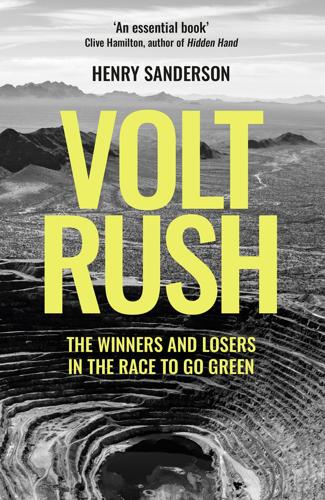
Volt Rush: The Winners and Losers in the Race to Go Green
by
Henry Sanderson
Published 12 Sep 2022
Chapter 13 Reduce, Re-use, Recycle: A Closed Loop 1 Skrabec, The Green Vision of Henry Ford, p. 175. 2 McGee, P., Sanderson H., ‘Electric vehicles: recycled batteries and the search for a circular economy’, Financial Times, 2 August 2021. 3 ‘Sustainable Supply Chain for Batteries’, Storage X Symposium, Stanford University [online], 2 November 2020, available at https://www.youtube.com/watch?v=FQ0yFAGELnE (accessed 7 April 2022). 4 McGee, Sanderson, ‘Electric vehicles: recycled batteries and the search for a circular economy’. 5 Ibid. 6 McDonough, W., Braungart, M., Cradle to Cradle: Remaking the Way We Make Things (London, Jonathan Cape, 2008), p. 24. 7 Ibid., p. 25. 8 Ibid., p. 158. 9 Home, A., ‘Humble aluminium can shows a circular economy won’t be easy’, Reuters, 26 March 2021. 10 Ibid. 11 ‘Chemistry can help make plastics sustainable – but it isn’t the whole solution’, Nature, 17 February 2021, www.nature.com/articles/d41586-021-00391-7?
…
Vehicle miles travelled in the US have increased by one hundred percent since 1980.15 In 1908 the kerb weight of the Ford Model T was 540 kilograms and three decades later the company’s Model 74 weighed almost exactly twice as much.16 Since 1990, US pick-up trucks have added around 1,300 pounds to their weight on average, with some vehicles now weighing 7,000 pounds, the equivalent of three Honda Civics.17 All this weight means more raw materials. Moving to what is known as a ‘circular economy’ by recycling and re-using is a way to make a dent in this continued demand for natural resources. It’s a concept that has been embraced by some of the largest corporations from Apple to Dell. Yet much of it consists of little more than soundbites and public relations messaging. Most smartphones have a limited lifespan, in part because manufacturers such as Google, Samsung and Xiaomi only allow users to download security updates for a set length of time.
…
Most smartphones have a limited lifespan, in part because manufacturers such as Google, Samsung and Xiaomi only allow users to download security updates for a set length of time. In November 2020 Apple paid $113 million in the US to settle a lawsuit brought by over thirty states that accused it of secretly reducing performance in older phones, leading consumers to buy new ones. Our progress towards a circular economy has as a result been achingly slow: we throw away an estimated fifty million tonnes of electronic waste a year, less than twenty percent of which is recycled.18 Yet there is more gold in a tonne of this e-waste than in a tonne of mined ore, along with over thirty different raw materials including lithium and cobalt, tin and tungsten.

Prosperity Without Growth: Foundations for the Economy of Tomorrow
by
Tim Jackson
Published 8 Dec 2016
Pointing out that ever greater consumption of resources is (in itself) a ‘driver of growth’ in the current paradigm, US ecological economist Robert Ayres argues that, ‘in effect, a new growth engine is needed, based on non-polluting energy sources and selling non-material services, not polluting products’.10 The same idea is implicit in the concept of the ‘circular economy’, popularised in recent years by the Ellen MacArthur Foundation. The circular economy is characterised by strategies of reuse, refurbishment, remanufacturing and recycling. The overall aim is reduce the linear throughput associated without compromising the quality of the services that material goods can provide.11 We’ll come back in the following chapter to the question of whether or not this strategy provides a new engine of growth.
…
But the concept can be traced back considerably further, at least to a paper published in 1966 by the economist Kelvin Lancaster, entitled ‘Goods are not goods’, in which he argued that goods are really bundles of ‘attributes’ that have value to consumers (Lancaster 1966). 8 See Alperovitz (2013), Jackson and Victor (2013), McKibben (2007), Schor (2010), Schumacher (1973), and references therein. 9 I’m grateful to Brian Davey at FEASTA (Foundation for the Economics of Sustainability) for suggesting the terminology of the Cinderella economy. 10 Ayres (2008: 292). See also BERR (2008). 11 On circular economy, see www.ellenmacarthurfoundation.org/circular-economy (accessed 26 March 2016). See also Allwood and Cullen (2015), Stahel and Jackson (1993). 12 ILO (2015: 19). 13 Keynes (1930). For some recent proposals to reduce working hours, see Hayden (1999), NEF (2013), Skidelsky and Skidelsky (2013). 14 It’s interesting to note that these trends have been reversed somewhat during the last decade, with working hours increasing and labour productivity growing more slowly (Chapter 2).
…
Agriculture will pay more attention to the integrity of the land and the welfare of livestock. Manufacturing will pay more attention to durability and repairability. Construction must prioritise refurbishment of existing buildings and the design of new sustainable and repairable infrastructures. The model of the ‘circular economy’ has much to offer here.13 Investment will be absolutely vital to achieve this transformation. And this represents a radical change in the nature of investment portfolios. Investment in resource extraction and in labour productivity growth will be diminished. Instead our investment portfolios must be geared towards energy and resource productivity, low carbon infrastructure, the protection of social and ecological assets.
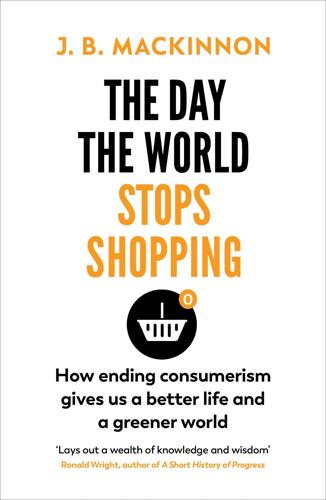
The Day the World Stops Shopping
by
J. B. MacKinnon
Published 14 May 2021
There’s enough that deconsumer culture might still be able to offer a little fast fashion—something bright and clever, something constantly changing and then recycled, to add flair to our durable pants and classic jackets. “It would enable that, for those that want to live that path,” said Rhoades. “We’re not all going to be shopping the same.” The real threat to the promise of a circular economy is, once again, the sheer scale of consumption. Could the circular economy provide an adequate wardrobe for all of the world’s nearly 8 billion people? Rhoades thinks it could. Could it supply us all with the fast-fashion lifestyle of the world’s richest consumers? No. If you need more and more clothes—if demand for clothing perpetually grows—then the circle itself has to expand, like a black hole that sucks in energy and resources.
…
The final product looks and behaves quite a bit like cotton and can be used to make textiles similar to viscose, lyocell and Tencel, which are already made into clothes in factories around the world. The rest of the materials that go into our garments—other fabrics, dyes, finishes and so on—come out as waste, but on average so far, almost 90 percent less waste than throwing out clothes entirely. If you have heard about circular design or the circular economy, this is the kind of circle they’re talking about: a cycle in which products are constantly reused or recycled into new products without ever ending up as waste. Currently, not much of the economy is circular, and it isn’t becoming more circular, either. (The nonprofit organization Circle Economy began tracking the numbers in 2018, when 9.1 percent of the economy was circular.
…
By 2020, the number had dropped to 8.6 percent, and the amount of materials consumed by the global economy was higher than ever.) In the garment trade right now, only about 1 percent of discarded clothing is recycled into other clothing, and a further 12 percent is turned into lower-quality goods like mattress stuffing and wiping cloths. From the perspective of circular economy companies like Worn Again, a hundred billion dollars’ worth of raw materials each year are ending up as waste. In February 2020, Worn Again opened a pilot research and development facility in Redcar, England, putting them one step away from a trial-size version of a clothes reprocessing plant.
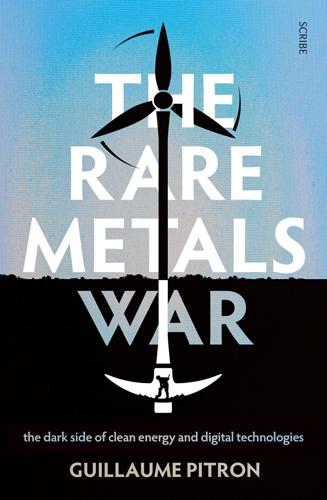
The Rare Metals War
by
Guillaume Pitron
Published 15 Feb 2020
This is where Japan has broken new ground by recognising the sheer quantity of rare-earth metals contained in the thousands of ‘urban mines’ (e-waste dumps) littering its territory.32 For example, every one of Japan’s 200 million used smartphones contain a few tenths of a gram of rare metals that can be isolated. That’s 300,000 tonnes of rare-earth metals potentially lying dormant across the island country — enough to keep it self-sufficient for the next three decades. This realisation is the driving force behind one of the most innovative circular economies for e-waste. (See Appendix 10 on the lifecycle of metals.) Every year, collection drives are held across Japan to return 650,000 tonnes of small electronic items to the consumption circuit. The campaign is so popular that it has earned the endorsement of Japan’s favourite virtual celebrities, including Hatsune Miku.
…
The US army, for instance, a formidable consumer of rare metals, has warehouses on the outskirts of Tucson, Arizona, filled to the rafters with out-of-service aircraft, all concealing tonnes of rare-earth metals that US army generals are unable to extract or reuse.35 Worse still is the fact that as the world’s most powerful army withdrew from Afghanistan, it is believed to have left behind $6 billion worth of military equipment crammed with magnets that its enemies could dispose of as they pleased.36 Many in the United States have recognised just how big a challenge it is, and have suggested giving soldiers instructions on how to retrieve components containing rare-earth metals before demobilising. For industry, it’s another matter entirely, for the circular economy has completely upended traditional supply chains. In addition to having to know where their raw materials are sourced, manufacturers must now also be able to trace the users of their product. Companies such as Apple and H&M, which of course know where their rare-earth minerals and cotton bales are coming from, now have to trace the billions of iPhones and old jeans scattered across the globe.
…
It could also give us a glimpse into the future of rare metals: a world in which the mining powerhouses are not the countries with the richest mineral deposits, but those with the most bountiful waste dumps; where treasure maps of the world’s biggest scrap mountains will be drawn, and some debris will be ranked ‘world class’ in the same way as some of today’s mineral deposits. Our waste dumps will be coveted goldmines. Accordingly, Japan hardly mines any rare metals from its soils. Its pre-eminence in this circular economy could also turn it into a powerful exporter of those retrieved metals on which other countries depend. Thus, the geopolitics of recycling would be born — at least, this is what Japan believes. It’s also not hard to imagine the technological advances that would make production more ecological, reducing the need to mine and to export old television sets to e-waste dumps in Ghana and Nigeria.

Imaginable: How to See the Future Coming and Feel Ready for Anything―Even Things That Seem Impossible Today
by
Jane McGonigal
Published 22 Mar 2022
When you wear it out, you send the sneaker back to the company for recycling, and they send you a new pair.21 You may never own or throw out a pair of shoes again. Driving many of these innovations is the concept of a circular economy. In a circular economy, all resources, products, and materials are kept in use for as long as possible and are never simply discarded. Most big companies are already working toward circular economy solutions, with the expectation that within a decade or two, it will be the norm. So if you do find yourself waking up in a world like “The Road to Zerophoria,” the good news is that you won’t be figuring out how to adapt on your own.
…
Here’s How It Works,” New York Times, July 22, 2021, https://www.nytimes.com/2021/07/21/climate/maine-recycling-law-EPR.html. 16 Mike Pomranz, “California Coffee Shops Test Reusable To-Go Cups Backed by Big Companies Like Starbucks,” Food and Wine, February 20, 2020, https://www.foodandwine.com/news/reusable-cup-trials-starbucks-mcdonalds-california; Mike Pomranz, “Burger King Tests Eco-Friendly Packaging Options,” Food and Wine, May 4, 2021, https://www.foodandwine.com/news/burger-king-loop-new-sustainable-packaging. 17 “Renew,” Eileen Fisher, accessed August 27, 2021, https://www.eileenfisher.com/renew. 18 Anna Ringstrom, “IKEA Opens Pilot Second-Hand Store in Sweden,” World Economic Forum, October 30, 2020, https://www.weforum.org/agenda/2020/10/ikea-opens-pilot-second-hand-store-sweden-circular-economy/. 19 “Why Hyla?,” Hyla Mobile, accessed August 27, 2021, https://www.hylamobile.com/why-hyla/. 20 Alex Thornton, “These 11 Companies Are Leading the Way to a Circular Economy,” World Economic Forum, February 26, 2019, https://www.weforum.org/agenda/2019/02/companies-leading-way-to-circular-economy/. 21 “This Is Cyclon,” On, accessed August 27, 2021, https://www.on-running.com/en-us/cyclon. Future Simulation #2 1 Yaryna Serkez, “Every Country Has Its Own Climate Risks.
…
Try to have a bit of balance in your list—at least one of the forces you pick should feel like a risk to you, and at least one should feel like an opportunity: the climate crisis post-pandemic trauma social justice movements increasing economic inequality social and political tensions caused by refugee crises and mass migration automation of work decreasing birthrates in Western countries and a “youth boom” in Africa shifting religious majorities and increasing theological diversity the global switch to renewable energy sources alternatives to capitalism and market-based economies social media–driven misinformation, disinformation, and conspiracy theories rise of authoritarianism and loss of faith in democracy widespread adoption of facial recognition and surveillance technologies digital currencies, cryptocurrency, and programmable money universal basic income and direct cash transfers internet shutdowns mandated by government or law enforcement the “right to disconnect” movement and four-day workweeks lifelong learning and “reskilling” at the workplace job guarantees regenerative design and the circular economy genomic research and CRISPR genetic modification the Internet of Things augmented and virtual reality satellite networks and space internet If there’s something on the institute’s list above that you don’t know anything about at all, this is the perfect opportunity to go find your first clue.
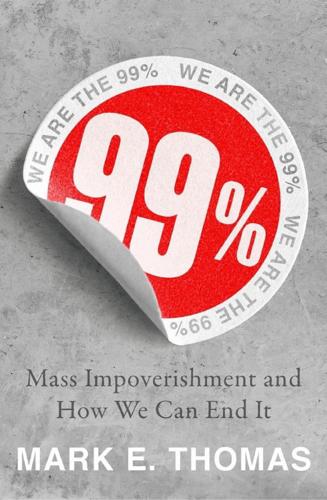
99%: Mass Impoverishment and How We Can End It
by
Mark Thomas
Published 7 Aug 2019
Sustainability: Cities that provide services without stealing from future generations.19 Even more fundamentally, the concept of a ‘closed-loop’ or ‘circular’ economy offers the potential to minimize waste, to reduce costs, to prevent harmful pollution such as greenhouse gas emissions and degradation of the natural world, and to safeguard supply of finite resources such as rare earth metals. There need no longer be a trade-off between economic growth and sustainability. The diagram below, from the Ellen MacArthur Foundation, illustrates the biological and technical cycles in the circular economy as well as the three key principles:20 1. preserve and enhance natural capital by controlling finite stocks and balancing renewable resource flows; 2. optimize resource yields by circulating products, components and materials in use at the highest utility at all times in both technical and biological cycles; 3. foster system effectiveness by revealing and designing-out negative externalities.
…
The diagram below, from the Ellen MacArthur Foundation, illustrates the biological and technical cycles in the circular economy as well as the three key principles:20 1. preserve and enhance natural capital by controlling finite stocks and balancing renewable resource flows; 2. optimize resource yields by circulating products, components and materials in use at the highest utility at all times in both technical and biological cycles; 3. foster system effectiveness by revealing and designing-out negative externalities. Figure 19: The key cycles in the circular economy Source: The Ellen MacArthur Foundation Taken together, these technologies and business models will have some extraordinary impacts, not the least of which is that the total cost to the world could fall dramatically. The principal financial costs of a product or service are those of labour, energy, raw materials and land.
…
A world using clean energy in a closed-loop economy would have lower total costs: the financial cost as we can currently measure it plus the cost of externalities. Such a world would be far more sustainable. Our current – financial only – definition of profit makes it harder for companies to migrate towards a circular economy. Correctly charging them for their externalities – what Margaret Thatcher called the ‘polluter pays’ principle – brings their incentives in line with the needs of society at large.21 At the same time as the costs fall, we could see a dramatic expansion in our ability to provide new products and services.
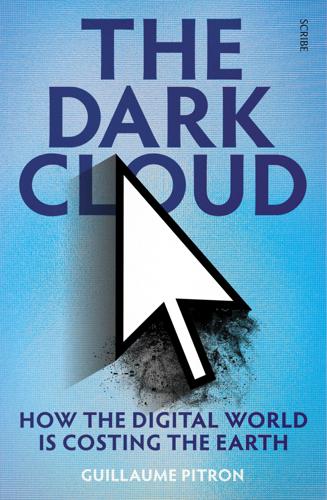
The Dark Cloud: How the Digital World Is Costing the Earth
by
Guillaume Pitron
Published 14 Jun 2023
They urge us to ward off the soothsayers of the digital world who boast an even more connected future, in favour of a more habitable future without it.72 At the very least, the ‘slow web’ movement invites us to decrease the network by lowering broadband speeds. Our digital diet will also depend on the circular economy of data centres. The next part of the story: certain data contained in servers nearing end-of-life has by that stage become so sensitive that the hardware must be destroyed at all costs. A Dutch recycler speaks about how many major banks and government bodies hire armed guards to transport servers back to the factory to be scrapped … Some companies even film it happening to prove that their clients’ data has been destroyed.73 ‘The circular economy of data centres will be absolutely crucial, but it won’t be enough’, says Philippe Luce.
…
In a New York Times op-ed published in 2008, the American anthropologist Jared Diamond wrote that, ‘If India as well as China were to catch up, world consumption rates would triple’ — a scenario he believed would be untenable.12 His prediction was confirmed in 2019 in a fascinating report by the Organisation for Economic Co-operation and Development (OECD): by 2060, the global use of materials may be two and a half times higher than that of 2011, increasing from seventy-nine gigatons to 167 gigatons per year.13 Such scenarios have been distorted by enticing terms such as ‘the circular economy’, ‘process efficiency’, and ‘resource productivity gains’, with the aim of disassociating the consumption of materials from the generation of wealth — in a nutshell, ‘more from less’.14 It’s a concept also lauded by ‘ecomodernists’ who state in their techno-optimistic manifesto published in 2015 that ‘Thanks to technological improvements in agriculture, during the half-century starting in the mid-1960s, the amount of land required for growing crops and animal feed for the average person declined by one-half.’15 The internet is changing the rules of the game: other than enhancing manufacturing processes and reducing the flow of materials, the internet offers to eradicate the overconsumption of resources.
…
And at the end of their lifespans, these hundreds of billions of objects and living creatures, packed with sensors, will transmute into e-waste: a chipped dalmatian, after eating a spoiled can of dog food; a connected oak tree sent to the sawmill; or a cow with a microchip, on its way to the abattoir. May the reader forgive me for this next grim conjecture: even the departed, endowed with brain implants and artificial organs, will become e-waste. There will need to be approved collection services, a competitive recycling industry, and a well-oiled circular economy. The four cardinal Rs —recover, repair, reuse, and recycle — will be the solution to the accumulation of all this hybrid scrap of animal, vegetable, and mineral matter, and future generations will use more of their creativity to come up with ways to extend the lifespan of what already exists, rather than bring to life new, revolutionary products.
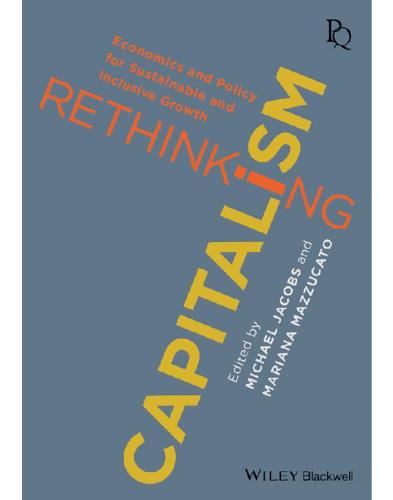
Rethinking Capitalism: Economics and Policy for Sustainable and Inclusive Growth
by
Michael Jacobs
and
Mariana Mazzucato
Published 31 Jul 2016
Rehn, The Trade Union Movement and Full Employment. Report to the LO Congress in 1951, Stockholm, The Swedish Confederation of Trade Unions (LO), 1951. 23 Ellen MacArthur Foundation, Towards A Circular Economy: Business Rationale For An Accelerated Transition, Report, 2 December 2015, https://www.ellenmacarthurfoundation.org/publications/towards-a-circular-economy-business-rationale-for-an-accelerated-transition (accessed 29 December 2015); Ellen MacArthur Foundation, Growth Within: A Circular Economy Vision For A Competitive Europe, Report, 25 July 2015, http://www.ellenmacarthurfoundation.org/assets/downloads/publications/EllenMacArthurFoundation_Growth-Within_July15.pdf (accessed 29 December 2015). 24 C.
…
This clustering of interdependent users and producers and of self-reinforcing capabilities results in synergies and support networks that make further innovations easier and profitable, as well as less risky.27 In essence this is about achieving growth and well-being across society by increasing the proportion of services and intangibles, both in GDP and in the individual satisfaction of needs. Product innovation trends are already visible: custom-designed eco-friendly materials, conservation, recycling, reduction of material content per product and designing for durability and zero-waste. The notion of a ‘circular economy’ has entered the mainstream, with global corporations such as Philips and Unilever championing the process. This promotes the gradual replacement of ‘products’ with ‘services’, particularly in the replacement of possession with renting. From commercial lighting systems and airplane engines to jeans, carpets and cars, the question has become: why buy when you have the option of ‘renting’ a product that is upgradeable, maintained and available on demand?
…
Redesigning the tax system (using digital databases) to tax ‘bads’ rather than ‘goods’—for example, taxing resource and energy use instead of labour and consumption—would stimulate saving of materials and energy and encourage employment and consumer spending on intangibles. Regulate for durability and maintenance. Making producers responsible for the entire lifespan of their products would encourage the circular economy and manufacturing durability, as well as stimulating the growth of a rental and maintenance economy. Redesign the metrics with which to measure wealth production. As numerous studies have shown in recent years, GDP has very limited meaning and is even distorting in the knowledge economy. New metrics need to be designed to account for the use of energy and materials and to measure the various ways in which value is now created and well-being enhanced.
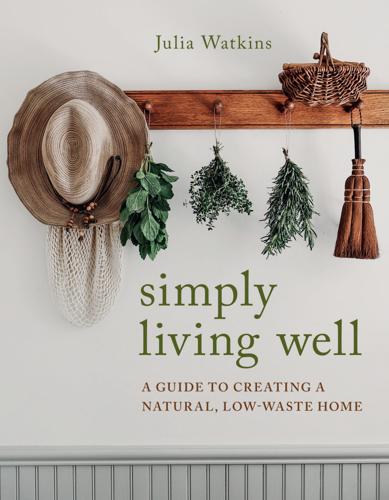
Simply Living Well: A Guide to Creating a Natural, Low-Waste Home
by
Julia Watkins
Published 6 Apr 2020
And even where forests are replanted, most often we’re replacing old-growth forests and all their rich biodiversity with tree plantations that at best comprise just a few species of trees. In a circular economy, we’re still extracting at least some of our resources, though with a bit more thought and a lot more care. For example, there are ways to manage certain types of resource extraction so they align more with natural cycles of regeneration. And once extracted, resources can be processed and utilized in a way that anticipates value in a product even after it has been used by a consumer, at which point it can be repurposed, reused, remanufactured, or otherwise refurbished. In a circular economy, we avoid creating waste (and minimize what little waste we do produce) by keeping things continually in use, in one form or another.
…
Fundamentally, starting your pursuit of zero-waste means looking carefully at how you consume and what kinds of waste that produces. Everyone’s different, but even a cursory audit of your consumption habits ought to reveal opportunities to cut back on waste. It also sometimes helps to put your habits in a broader context, which to me means asking whether you’re part of the linear economy or the circular economy. Most of our economy is still a linear economy, where resources are extracted, processed, consumed, and discarded. Take a paper coffee cup—there’s a straight line running from a tree in the forest through the paper mill, the manufacturing plant, the coffee shop, your hand, the trash can, and a landfill.
…
In a circular economy, we avoid creating waste (and minimize what little waste we do produce) by keeping things continually in use, in one form or another. A great deal of the circular economy is accomplished by smarter designs, innovative materials, technological advances, and radically different business models. But there’s a lot—and I mean a lot— you can do in your own home, often by looking back to a time when the demands of feeding a family of four were no different than they are today, but with no fancy supermarkets or big box stores down the road or fast and easy take-out or delivery options a phone call away. This is why, for me, zero-waste has been about so much more than just avoiding trash or preventing waste.

Less Is More: How Degrowth Will Save the World
by
Jason Hickel
Published 12 Aug 2020
There’s another common fallacy that we need to face up to, and it has to do with recycling. The idea of a ‘circular economy’ has been gaining traction in policy circles recently as a response to the ecological crisis. These days everybody seems to be into it. The claim is that if we can scale up our recycling rate then we can keep growing GDP indefinitely, without worrying about the ecological impact of consumption. The European Union sees this as a plan to save capitalism, hoping that a circular economy will ‘foster sustainable economic growth’. Yes, we should absolutely aspire to a more circular economy. But the idea that recycling will save capitalism doesn’t hold water.
…
It’s because growth in total material demand is outstripping our gains in recycling. Once again, it’s not our technology that’s the problem – it’s growth.35 But there’s an even more fundamental problem with the idea of a ‘green growth’ circular economy. Even if we were able to recycle 100% of materials, that would pose a problem for the prospect of GDP growth. Growth tends to require an ‘outside’: an external source from which to extract value for free, or as close to free as possible. In a circular economy, the cost of materials is internalised. That’s good from the perspective of ecology, but bad from the perspective of capital accumulation. Recycling costs money, and the cost of paying for recycled materials makes it more difficult to generate ever-rising surplus.
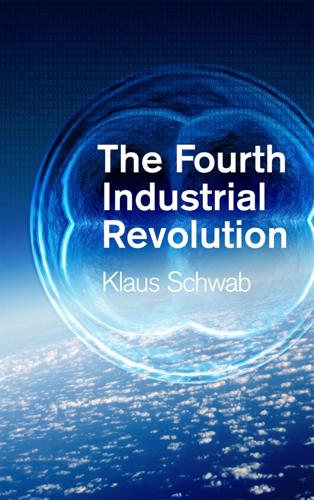
The Fourth Industrial Revolution
by
Klaus Schwab
Published 11 Jan 2016
New innovations in thermoset plastics, for example, could make reusable materials that have been considered nearly impossible to recycle but are used in everything from mobile phones and circuit boards to aerospace industry parts. The recent discovery of new classes of recyclable thermosetting polymers called polyhexahydrotriazines (PHTs) is a major step towards the circular economy, which is regenerative by design and works by decoupling growth and resource needs.8 2.1.2 Digital One of the main bridges between the physical and digital applications enabled by the fourth industrial revolution is the internet of things (IoT) – sometimes called the “internet of all things”.
…
* * * Box B: Environmental Renewal and Preservation * * * The convergence of the physical, digital and biological worlds that is at the heart of the fourth industrial revolution offers significant opportunities for the world to achieve huge gains in resource use and efficiency. As Project MainStream, the World Economic Forum’s initiative to accelerate the transition to the circular economy, has shown, the promise is not just that individuals, organizations and governments can have less impact on the natural world but also that there is great potential to restore and regenerate our natural environment through the use of technologies and intelligent systems design. At the heart of this promise is the opportunity to shift businesses and consumers away from the linear take-make-dispose model of resource use, which relies on large quantities of easily accessible resources, and towards a new industrial model where effective flows of materials, energy, labour and now information interact with each other and promote by design a restorative, regenerative and more productive economic system.
…
Source: Sculpteo, The State of 3D Printing (survey of 1,000 people), as published in Hedstrom, J., “The State of 3D Printing…”, Quora100 Positive impacts – More personalized products and personal fabrication – Creating niche products, and making money selling them – Fastest growth of 3D printing where each customer has slightly different needs from a product – e.g. a particular shaped foot requires a specially sized shoe – Reduced logistics costs, with the possibility of huge energy savings101 – Contributing to abundant local activities; crafting own goods that benefit from the removal of logistics costs (circular economy) Negative impacts – Global and regional supply and logistics chain: lower demand resulting in job losses – Gun control: opening opportunities for printing objects with high levels of abuse, such as guns – Growth in waste for disposal, and further burden on the environment – Major disruption of production controls, consumer regulations, trade barriers, patents, taxes and other government restrictions; and, the struggle to adapt The shift in action Almost 133,000 3D printers were shipped worldwide in 2014, a 68% increase from 2013.
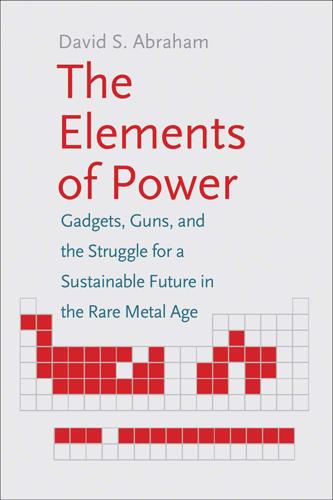
The Elements of Power: Gadgets, Guns, and the Struggle for a Sustainable Future in the Rare Metal Age
by
David S. Abraham
Published 27 Oct 2015
Environmental Protection Agency (EPA), “Statistics on the Management of Used and End-of-Life Electronics,” accessed December 19, 2014, http://www.epa.gov/epawaste/conserve/materials/ecycling/manage.htm. Electronics TakeBack Coalition, “E-Waste Problem Overview.” 30. “Why Are Rare Earth Metals So Important?” accessed December 19, 2014, lamprecycling.veoliaes.com/newsletter/September2013/6. 31. Desiree Mohindra, “Circular Economy Can Generate US$ 1 Trillion Annually by 2025,” World Economic Forum, accessed December 19, 2014, www.weforum.org/news/circular-economy-can-generate-us-1-trillion-annually-2025. 32. Francois-Xavier Lienhart, “The Implementation of an Energy-Saving Society Contributes to the Environment, People and Economy,” presentation, Ministry of Economy, Trade and Industry, Tokyo, Japan, November 1, 2011. 33.
…
For people to begin to make educated decisions about their resource consumption, they need to know what they are consuming. Labeling also encourages companies to know what materials are in their products and can facilitate recycling when the information is placed in bar codes on the side of a product.30 A report by the Ellen MacArthur Foundation states that a circular economy, based on remanufacturing, reuse, and recycling would save $1 trillion in material costs by 2025 and create one million jobs in Europe alone. It could also fuel the next generation of recycling techniques, which the world desperately needs.31 An even better way to keep minor metal resource use in check is decidedly low-tech: conservation.
…
In the United States, only two of every three aluminum cans are recycled, despite an established infrastructure to handle them. And the cans are relatively easy to reprocess because they are made almost completely of aluminum. 35. Barbara Reck, telephone interview, May 8, 2013. 36. Action and Resource Center, Investigating the Role of Design in the Circular Economy, 1st ed., e-book (Actions and Research Centre2013), available at https://www.thersa.org/discover/publications-and-articles/reports/the-great-recovery-exec-summary/. 37. Kenji Baba, Yuzo Hiroshige, and Takeshi Nemoto, “Rare-Earth Magnet Recycling,” Hitachi Review 62, no. 8 (2013): 452, www.hitachi.com/rev/pdf/2013/r2013_08_105.pdf. 38.
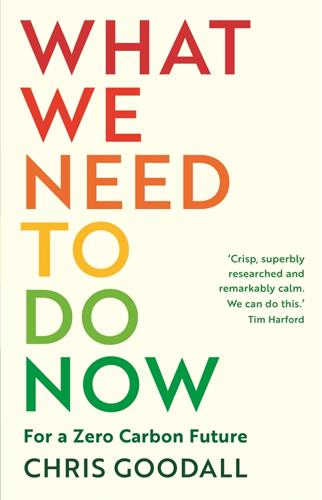
What We Need to Do Now: A Green Deal to Ensure a Habitable Earth
by
Chris Goodall
Published 30 Jan 2020
This small business operates in a building alongside other carbon-reducing activities such as an enterprise that rents out consumer appliances, like pressure washers, for short-term use. For clothing that no longer fits, or has been damaged in use, Oxford Alterations can make inexpensive changes so you can continue wearing the garment. They even hold workshops to help you make your own clothes. Businesses like this will be central to the development of the ‘circular economy’, as well as producing good-quality skilled employment for local people. ‘Fixing something we might otherwise throw away is almost inconceivable to many in the heyday of fast fashion and rapidly advancing technology,’ says Rose Marcario, the CEO of Patagonia, one of the most sustainable fashion companies in the world.
…
I was both right and wrong. IKEA recently started using the phrase ‘peak stuff’ to explain the plateauing of its sales in developed markets. But, while Europe is probably using a smaller weight of materials, Asia is more than making up for this slowdown. ‘Peak stuff’ won’t save us from the climate crisis. CIRCULAR ECONOMY CHALLENGES Building a working global economy that minimises the need to constantly extract new resources should be the world’s target. There is growing talk about ‘circular’ production processes that reuse existing materials, but most industries have made only token progress towards reducing their footprint.
…
And anyone interested in the carbon footprints of modern lifestyles should also read Berners-Lee’s How Bad are Bananas (Profile Books, new edition in Spring 2020). CLOTHING AND STUFF The website of Ellen MacArthur’s foundation (www.ellenmacarthurfoundation.org) contains much of interest on the circular economy, and clothing in particular. WRAP (www.wrap.org.uk), the waste minimisation institute, publishes consistently interesting material on cutting the use of resources. The work of the Energy Transitions Commission (www.energy-transitions.org) is exceptional and includes detailed reports on sectors of the economy which are most difficult to decarbonise.

The War Below: Lithium, Copper, and the Global Battle to Power Our Lives
by
Ernest Scheyder
Published 30 Jan 2024
“The mining industry needs to know that if we’re concerned about climate, water, and responsible sourcing, that we need to look for innovation,” Jackson said. Daisy was part of Apple’s plan to become a so-called closed-loop manufacturer, one that adhered to the principles of a “circular economy.” In theory, this means that old electronics get broken down to build new ones, over and over, thus limiting the need for new mines. More an aspiration for now, perhaps, than a realistic target given the world’s rising hunger for electronic devices, aiming for a circular economy nevertheless would help reduce a constant cycle of consumption and disposal, easing the burden on the planet’s strained resources. “We’ve trained people how to recycle certain metals, like steel and aluminum, and we make them feel guilty if they don’t.
…
Benjamin Spreche et al., “Life Cycle Inventory of the Production of Rare Earths and the Subsequent Production of NdFeB Rare Earth Permanent Magnets,” Environmental Science & Technology, 48 (7) (February 27, 2014): 3951–58, pubs.acs.org/doi/10.1021/es404596q. 26. Andy Home, “Humble Aluminium Can Shows a Circular Economy Won’t Be Easy,” Reuters, March 26, 2021, www.reuters.com/business/energy/humble-aluminium-can-shows-circular-economy-wont-be-easy-andy-home-2021-03-26/. 27. James Morton Turner, “Recycling Lead-Acid Batteries Is Easy. Why Is Recycling Lithium-Ion Batteries Hard?” CleanTechnica, July 24, 2022, cleantechnica.com/2022/07/24/recycling-lead-acid-batteries-is-easy-why-is-recycling-lithium-ion-batteries-hard/. 28.
…
It was a shocking thing to process. “I don’t think many people have clued into that,” he said. And those Arizona facilities and the other spoke sites aimed to grow bigger still, with Li-Cycle eyeing expansions in Europe and Asia. Lithium-ion battery recycling may not yet have been able to fuel Apple’s dreams of a completely circular economy, but neither was it a science experiment any longer. The lithium-ion battery market was valued at $1.33 billion in 2020, a number expected to spike to $38.21 billion by 2030.59 Traditional sources of lithium and other metals were put on notice. Yes, new mines would be needed to supply the green energy transition’s initial phases.
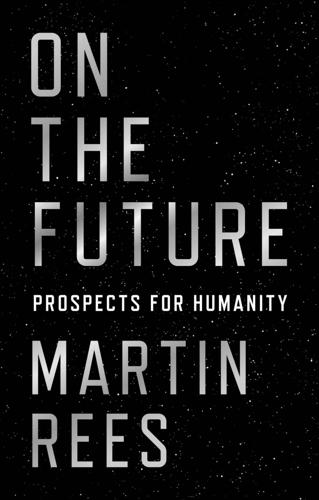
On the Future: Prospects for Humanity
by
Martin J. Rees
Published 14 Oct 2018
To take one example, when a building is demolished, some of its elements—steel girders and plastic piping, for instance—will hardly have degraded and could be reused. Moreover, girders could be more cleverly designed at the outset so as to offer the same strength with less weight, thereby saving on steel production. This exemplifies a concept that is gaining traction: the circular economy—where the aim is to recycle as much material as possible.19 Often, technical advances make appliances more efficient. It would then make sense to scrap the old ones, but only if the efficiency gain is at least enough to compensate for the extra cost of manufacturing the updated version. Appliances and vehicles could be designed in a more modular way so that they could be readily upgraded by replacing parts rather than by being thrown away.
…
Woltzman, Climate Shock and the Economic Consequences of a Hotter Planet (Princeton, NJ: Princeton University Press, 2015). 17. W. Mischel, Y. Shoda, and M. L. Rodriguez, ‘Delay of Gratification in Children’, Science 244 (1989): 933–38. 18. ‘Cuba’s 100-Year Plan for Climate Change’, Science 359 (2018): 144–45. 19. In the United Kingdom the case for the circular economy has gained traction through the advocacy of a widely admired high-profile figure, the around-the-world sailor Ellen MacArthur. 20. An excellent survey of geoengineering is Oliver Morton, The Planet Remade: How Geoengineering Could Change the World (Princeton: NJ: Princeton University Press, 2016).
…
See also climate change; global warming carbon sequestration, 51 carbon tax, 44 care givers, 96–97 Carson, Rachel, 223 Cassini space probe, 142–43 catastrophes: in Diamond’s analysis of five societies, 216; ending all humanity or life, 9, 110–18; global warming and, 40, 42, 57–58; natural threats possibly leading to, 16; need for international planning and, 217, 218–19, 226; worse in interconnected world, 76, 109–10, 215–16 Catholic Church: opposing embryo research, 65; stewardship of planet and, 34–35 CCTV (video surveillance), 78 CFCs, 31–32, 47, 161 Challenger disaster, 145 Chernobyl disaster, 56 chess, 86, 87–88 China: information technology in, 83, 84; one-child policy of, 22; space program of, 145 circular economy, 46 cities. See megacities of developing world; urbanisation citizen science, 157, 212 climate change, 21, 37–44; appropriate deployment of technology and, 4; computer models of, 57, 190; confidence in predictions of, 171; Dyson’s skepticism about urgency of, 79; feedback from water vapour and clouds, 39, 57; geoengineering and, 58–59, 60, 225; geopolitical obstacles to planning for, 226; loss of biodiversity due to, 32–33; politically realistic mitigation measures, 46–48; predicting what will happen, 57–58; reasons for inaction on, 44–45; serious societal consequences of, 215; timescale for response to, 60, 226; Vatican involvement with, 34–35.

Exponential Organizations: Why New Organizations Are Ten Times Better, Faster, and Cheaper Than Yours (And What to Do About It)
by
Salim Ismail
and
Yuri van Geest
Published 17 Oct 2014
Lean Startup prototyping and testing Using the Lean Startup method to test and validate assumptions around new campaigns and new products via advanced testing and prototyping forms, such as A/B-testing concepts in Google AdWords and landing pages, social media monitoring, neuro-feedback in retail stores of test groups, customer development interviews, crowdfunding, and testing in virtual worlds such as High Fidelity. In sum: a data-driven and continuous testing approach to marketing. New revenue models More subscriptions versus one-off sales due to access versus ownership trend; more apps; more connected products and more cradle to cradle and Circular Economy; more freemium models (free and paid—e.g., the horribly named “tryvertising”). New fee models, such as API fees, platform licensing, syndication fees and virtual goods. CFO – Chief Financial Officer The finance function, although historically very conservative and cautious, is about to face radical disruption from several technologies, including AI (Deep Learning), sensors and Bitcoin (the underlying block chain protocol in particular).
…
Key Opportunity Implications and Actions Decentralized or outsourced production Digital production and unbundling of production steps, freeing the company to focus on its core competencies (customer relationships, R&D, design and marketing). Accomplished by leveraging OEMs (e.g., PCH International, Flextronics, Foxconn) or through the use of 3D printers, robots and nanotech/stacks (see Tesla). Recyclable materials / circular economy Production materials that can be recycled and reused multiple times. Salvaging of faulty products through the systematic extraction of raw materials. This feeds on the decentralized production model above. Using bio-nanocomposites and nanocellulose for biodegradable packaging. Nanomaterials and nanomanufacturing Manufacturing and using materials made from engineered atoms and molecules (e.g., carbon graphene and carbyne), designed with specific shape, size, surface properties and chemistry to enhance reactivity, strength and electrical properties.
…
Leverage bio-based materials and synthetic biology as alternative means of production. Bio-production remains difficult to scale, but in the medium term promises to transform current production methods. It is important to note that the need for long-distance transport will drop over time due to the rise of localized production and a growing circular economy (recycling). More and more products will be produced on the spot through local partners (Leveraged Assets), access to 3D printers and cheap labor provided by highly customizable robots. Since customers prefer to receive products the moment they decide they need them, they will be increasingly receptive to locally assembled products for two reasons: ethics (jobs and sustainability) and practicality (lower delivery costs, improved customer service, etc.).
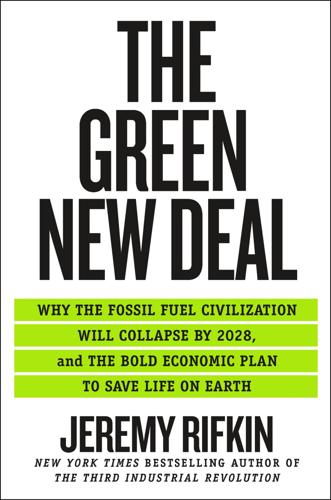
The Green New Deal: Why the Fossil Fuel Civilization Will Collapse by 2028, and the Bold Economic Plan to Save Life on Earth
by
Jeremy Rifkin
Published 9 Sep 2019
Other sharing networks are nonprofits or cooperatives where members freely share knowledge, goods, and services with one another. Millions of individuals are constructing the knowledge of the world and sharing it on Wikipedia, a nonprofit website that is the fifth-most-trafficked website, all for free.2 The sharing of a range of virtual and physical goods is the cornerstone of an emerging circular economy, allowing the human race to use far less of the resources of the Earth while passing on what they no longer use to others and, by doing so, dramatically reducing carbon emissions. The Sharing Economy is a core feature of the Green New Deal era. The Sharing Economy is now in its infancy and is going to evolve in many directions.
…
New studies, however, show that with the shift to an Internet of Things platform and a Third Industrial Revolution, it is conceivable to increase aggregate energy efficiency to as high as 60 percent over the next twenty years, amounting to a dramatic increase in productivity while transitioning into a nearly 100 percent postcarbon renewable energy society and a highly resilient circular economy.4 I regularly meet with heads of state, provincial governors, and mayors around the world; during our discussions I describe the smart green infrastructure shift into a zero-carbon Third Industrial Revolution economy that is the very centerpiece of a Green New Deal, then ask them if they have a better plan for mitigating climate change and creating the new businesses and employment opportunities that come with it.
…
Commissioner Cañete made note of the historic importance of this EU milestone, saying that “today, we are stepping up our efforts as we propose a strategy for Europe to become the world’s first major economy to go climate neutral by 2050.”5 According to the report, renewable energy consumption had spiked from 9 percent in 2005 to 17 percent in 2018 and was on schedule to meet the 20-20-20 target of 20 percent renewable energy consumption across the 28 member states along with the other two targets of a 20 percent increase in energy efficiency and a 20 percent reduction in CO2 emissions, by the 2020 deadline.6 Going forward, the plan requires joint action earmarked in seven strategic areas: energy efficiency; deployment of renewables; clean, safe, and connected mobility; competitive industries and a circular economy; infrastructure and interconnections; bioeconomy and natural carbon sinks; and carbon capture and storage to address remaining emissions. With 2020 targets in reach, the EU has set still even more aggressive new targets of 32 percent renewable energy, a 32.5 percent increase in energy efficiency, and a 45 percent reduction in greenhouse gas emissions, all by 2030, and a target to be nearly carbon-free by 2050.7 But the report acknowledged that although the EU was leading the world into a zero-emission postcarbon era, efforts were still far too slow, given the newly released IPCC report warning that the world’s nations only have twelve years left to transform their economies out of a carbon culture or risk sliding over the 1.5°C rise in Earth’s temperature and into an inevitable free fall, taking us deeply into the sixth mass extinction.

Radical Technologies: The Design of Everyday Life
by
Adam Greenfield
Published 29 May 2017
See Google Bowyer, Adrian, 86, 303, 306 Branch, startup, 246–7, 254 Brandes, Jeff, 256 Brantingham, Jeffrey, 231 Patricia, 232 Paul, 232 Braungart, Michael, 96 British Broadcasting Corporation, BBC, 177 Brown, Henry T., 103 Brown, Joshua, 223–4, 254 Brown, Michael, 231 “buddy punching,” 198 bullshit jobs, 203, 205 Bui, Quoctrung, 192–3 bushido, 266–7 Bushido Project, the, 266 Business Microscope, 197 Buterin, Vitalik, 147–50, 152, 154, 162–4, 167, 169, 172, 175, 177, 179, 303, 311 Byzantium, 69 CAD-Coin, 157 Californian Ideology, the, 283 Carmack, John, 82 cartography, 20 cats, 214 CCTV, 49–50, 54, 241 cellular automata, 86 Champs-Élysées, 1 Chaum, David, 121 Checkpoint Charlie, 70 chess, 263 Chevrolet Camaro, 216–18 Chicago Police Department, 230–1 China, 87, 102, 190, 194, 278–9, 286, 290, 306 Churchill, Winston, 28 circular economy, 92, 96, 99, 288 Ciutat Meridiana, Barcelona neighborhood, 109 climax community, 289 Cockney rhyming slang, 311 code library, 274–5 commons, the, 171–3 computer numerical control, CNC milling, 86, 93, 95, 97, 108, 110, 273 Container Store, 196 cooperatives, 171 cooperative motility, 80 Copenhagen, 31, 51 Cornell Law School, 151 Cortana virtual assistant, 39 Costco, 45 cozy catastrophe, 291 cradle-to-cradle industrial ecosystem. See circular economy The Craftsman (Sennett), 111 Creative Commons, 102–3 CRISPR technique, 298 Crossmatch, startup, 198 Crown Heights, Brooklyn neighborhood, 136 cryptocurrency, 8, 115–44, 145, 148–9, 153, 156, 164–5, 177–8, 248, 273, 279, 290, 293, 318 cryptofinance, 180 cryptography, 116, 118–19, 121–3, 129, 146–7, 176, 178–9 “Custom Notifications,” Chicago Police Department program, 235 cybernetic socialism, 191 DAO, The, distributed autonomous organization, 161–81 data subject, 251 Davao City, Philippines, 31, 43, 46 Day, Jeffrey, 63 distributed denial-of-service attacks, 45 “The Dead” (Joyce), 261 Deep Blue, 263–5 Deep Dream.
…
The only way widely distributed production might be reconciled with the desire for sustainability would be to ensure that digital fabrication can be made to work as a component of a metabolic process—what the visionary engineers Michael Braungart and William McDonough called a “cradle-to-cradle” industrial ecology, and what is these days more often referred to as a circular economy.14 Proposals along these lines call for manufacturing processes to consume as much as possible of the waste they produce. To a degree, we can surely pare down the waste that’s generated in the course of ordinary digital production. For depositional fabrication techniques like 3D printing, clever algorithms can be used to determine the optimal form of structural members; while this approach often lends an uncanny, posthuman aesthetic to machined objects, there’s no doubt that it also yields unprecedented strength-to-weight ratios, using the least matter to make the strongest possible component.
…
Some three years after Pai first announced his partnership with SWaCH, though, Protoprint still does not offer finished product for sale. This makes Pai’s claims—that production-grade filament can be made at scale in this way, for example, or that Protoprint’s trashpickers earn fifteen times what their unaffiliated peers do—all but impossible to evaluate. Nevertheless, here is a model for a sustainable, circular economy founded on digital fabrication. We may not be at all comfortable with Pai’s vision, or what it implies about our use of things made with HDPE. But millions of human beings, both throughout India and elsewhere around the world, live and work in garbage dumps, and this work recognizes their labor as an irreplaceable element of an extended circuit of digital production.

Nomad Century: How Climate Migration Will Reshape Our World
by
Gaia Vince
Published 22 Aug 2022
The debate over granting approval triggered a political crisis in the world’s largest island, forcing a general election in 2021, with Greenland’s 56,000 citizens torn between protecting their fragile environment and developing their economy, which currently relies on fishing and grants from Copenhagen. On that occasion, the environment won. Resource scarcity will force a move towards a circular economy, in which every product’s end of life is considered at the design stage so materials can be easily reused and cycled continually with little waste. Effective low-energy plastic-recycling methods have been developed, that can turn any plastic back into oil, from which any plastic can be made.
…
Kung peoples; lack of water resources; low levels of migration to; migration from as relatively low; poor infrastructure and city planning; population rise in; rainfall due to Indian irrigation; remittances from urban migrants; and restoring of planet’s habitability; Transaqua Project of water diversion; transatlantic slave trade; transport infrastructure in; urbanization in African Union agoraphobia AI and drone technology aid, development/foreign air-conditioning/cooling airships or blimps Alaska algae Aliens Act (UK, 1905) Alps, European Amazon region Americas Anatolia Anchorage, Alaska Anderson, Benedict animals/wildlife; global dispersal of; impact of fires on; impact of ice loss on see also livestock farming Antarctica; ice sheet Anthropocene era; four horsemen of Aravena, Alejandro Archaeology architecture/buildings: Aravena’s ‘partial houses’; energy-efficiency retrofits; floating infrastructure; heat- and light-responsive materials; low-carbon concrete; prefabricated and modular housing; in successful migrant cities; wooden skyscrapers; zero-carbon new-builds Arctic region; first ice-free summer expected; opening up of due to climate change Argentina Arrhenius, Svante Asia: cities vulnerable to climate change; drought-hit areas; extreme La Niña events; extreme precipitation in monsoon regions; Ganges and Indus river basins; and heat ‘survivability threshold’; huge populations of South Asia; lack of water resources; rivers fed by glaciers; small hydropower installations; urbanization Aswan High Dam asylum-seekers: Australia’s dismal record on; Britain’s proud history on; dominant hostile narratives about; drownings in English Channel; limbo situation due to delayed claim-processing; misinformation about see also refugees Athens Australia: Black Summer (2019–20); energy-supply economy; impact of climate emergency; indigenous inhabitants; low population density in; migration to; and mineral extraction in Greenland; renewable power in; treatment of asylum-seekers; White Australia Policy aviation Aztecs Babylon bacteria, in food production bamboo Bangkok Bangladesh; ‘Bangla’ communities in London; Burmese Rohingya refugees; impact of climate emergency; migration across Indian border; population density in; relocation strategies; training for rural migrants Bantu people Barber, Benjamin Barcelona Beckett, Samuel Belarus Belgium Bergamo, Italy Bhutan Bijlmermeer (outside Amsterdam) biodiversity loss/ecosystem collapse; coral reefs as probably doomed; crash in insect and bird populations; depletion of fish stocks; due to agriculture; due to farming; four horsemen of the Anthropocene; and human behaviour; Key Biodiversity Areas; links with climate change; and marine heatwaves; and overuse of fertilizers; restoring of; species extinction; and urban adaptation strategies see also environmental sustainability bioenergy with carbon capture and storage (BECCS) biotech industry birds black soldier flies black-footed ferrets BoKlok (IKEA spinoff) Bolivia Borneo Bosch, Carl Boston, Massachusetts Boulder, Colorado Brazil Brexit Brin, Sergey British Columbia Brown, Pat bureaucracy Burke, Marshall Burma business/private sector Cairo California; forest fires in Cambodia Cameroon Canaan Canada; and charter cities model; Climate Migrants and Refugee Project; economic benefits from global heating; expansion of agriculture in; first carbon-neutral building in; forest fires in; indigenous populations; infrastructure built on permafrost; regional relocation schemes Capa, Robert, capitalism Caplan, Bryan Caprera (Italian warship) carbon capture/storage; BECCS; ‘biochar’ use in soil; carbon capture and storage (CCS); direct capture from the air; by forests; in grasslands; Key Biodiversity Areas; in oceans; by peatlands; by phytoplankton; vegetation as vital carbon pricing/taxing carbon/carbon dioxide: amount in atmosphere now; Arrhenius’ work on; and biomatter decay in soil, ‘carbon quantitative easing’; continued emitting of; decarbonizing measures; effect on crop growth; emissions cut by building from wood; emissions from farming; emissions from human energy systems; emissions from urban buildings; geoengineering to remove; during last ice age; Miocene Era levels; new materials made from; ocean release of; released by wildfires; tree-planting as offsetting method; in tropical rainforests Carcassonne, France Card, David Cardiff Castro, Fidel Çatalhöyük, ancient city of Central African Republic Central America Chad ‘char people’ charcoal (‘biochar’) Chicago children: childcare costs; deaths of while seeking safety; ‘invisible’/living on the margins; left behind by migrant parents; and move to cities; numbers at extreme risk; in refugee camps; and sense of ‘belonging’ Chile China: adaptation for heavy rainfall events; Belt and Road Initiative; cities vulnerable to climate change; demography; desertification of farmland in north; economic domination of far east; emigrants and knowledge-flow; emissions as still rising in; extreme La Niña events; ‘green wall’ tree-planting projects; and heat ‘survivability threshold’; Hong Kong–Shenzhen–Guangzhou mega-region; hukou system; integrated soil-system management; internal migration in; migrant workers in Russia’s east; and mineral extraction; net zero commitment; small hydropower installations; South-to-North Water Diversion Project; ‘special economic zones’; Uyghur Muslim communities in; and water scarcity; ‘zhuan‘ documents Chinatowns Churchill (town in Manitoba) Churchill, Winston cities: adapting to net-zero carbon economy; city state model; coastal cities; as concentrated nodes of connectivity; ‘consumption cities’ in Africa; control of migration by; deadly urban heat; demand for cooling; devolving power to communities; in eighteenth/nineteenth-century Europe; entrenched assets; and extreme flood risk; flood defences; as focal points for trade networks; food production in; genetic impacts of; in high altitude locations; large megacities; merging into mega-regions; as particularly vulnerable to climate change; phased abandonment of; population densities in; private gardens in; relocation of; relocation strategies within; sprawling shanty towns in; strategies against impact of heat; zero-carbon new-builds see also migrant cities; migration, urban citizenship; patriotism of welcomed migrants; ‘UN/international passport’ idea Clemens, Michael climate change, historic: Cretaceous–Palaeogene meteorite impact event; in late-bronze-age Near East; and migration; in Miocene Era; and transition to farming climate change/emergency; 3–5° C as most likely scenario; as affecting all of Earth; cities as particularly vulnerable to; destruction of dam infrastructure; enlisting of military/security institutions against; every tenth of a degree matters; extreme weather events; global climate niches moving north; global water cycle as speeding up; greenhouse gas emissions as still growing; impact of cities; impact on lives as usually gradual; inertia of the Earth’s climate system; lethality by 2100; links with biodiversity loss; near-universal acceptance of as human made; net zero pledges; Paris Agreement (2015); path to 3–4° C-hotter world; situation as not hopeless; slow global response to; as threat multiplier; warming as mostly absorbed by oceans see also biodiversity loss/ecosystem collapse; drought; fires; floods; heat climate models: future emissions scenarios; heating predictions; impact of 4° C-hotter world; IPCC ‘Representative Concentration Pathways’ (RCPs); optimum climate for human productivity; threshold for mass migrations coastal areas: coastal cities; migration from; retreating coastlines; seawater desalination plants cochineal scale insect Colombia colonialism, European Colorado Columbia Concretene construction industry copper coral reefs Cornwall Costa Rica cotton Covid-19 pandemic; cooperation during cross-laminated timber (CLT) Crusaders Cruz, Abel Cuba cultural institutions/practices: cultural losses over time; diversity as improving innovation; migration of; in well-planned migrant cities cyclones Cyprus Czech workers in Germany Dar es Salaam Death Valley Delhi Democratic Republic of Congo demographic changes/information: and decline of nationality viewed in racial terms; depopulation crisis; elderly populations in global north; GenZ; global climate niches moving north; global population patterns; global population rise; ‘household formation’; huge variation in global fertility rates; migrants as percentage of global population; population fall due to urban migration; population-peak projection; post-war baby boom; and transition to farming Denmark Denver, Colorado desert conditions Dhaka Dharavi (slum in Mumbai) diet and nutrition: edible seeds of sea grasses; genetically engineered microbes; global disparities in access to nutrition; and Haber–Bosch process; insects as source of protein and fats; loss of nutrition due to heat stress of crops; move to plant-based diet; vitamin D sources; zinc and protein deficiencies dinosaurs direct air capture (DAC) disease; waterborne Doha Domesday Book (1086) Driscolls (Californian berry grower) drone technology drought; as affecting the most people; in Amazon region; impact on farming; in late-bronze-age Near East; and rivers fed by glaciers; and sulphate cooling Dubai Duluth, Minnesota Dunbar, Robin economies; Chinese domination of far east; economic growth; forced move towards a circular economy; GDP per capita measure; Global Compact for Migration; global productivity losses due to heat; immigrant-founded companies; and influx of low-skilled migrant workers; migration as benefitting; mining opportunities exposed by ice retreat; and nation state model; need to open world’s borders; new mineral deposits in northern latitudes; northern nations benefitting from global heating; ‘special economic zone’ concept; taxing of robots see also employment/labour markets; green economy; political and socioeconomic systems; trade and commerce education: availability to migrants; as key to growth; and remittances from urban migrants; systems improved by migration Egypt; Ancient electricity: current clean generation as not sufficient; decarbonizing of production; electric vehicles; grid systems; hydroelectric plants; and net zero world; renewable production Elwartowski, Chad employment/labour markets: amnesties of ‘illegal’ migrants; and arguments against migration; and automation; controlled by city authorities; and global labour mobility; and the green economy; impact of heat on jobs; indentured positions; and influx of low-skilled migrant workers; jobs in growth industries; jobs restoring diversity; jobs that natives don’t want to do; mechanization/automation slowed down by migrant workers; migrants bring greater diversity to; need for Nansen-style scheme; occupational upgrading of locals due to immigration; refugees barred from working; role of business in migrant integration; rural workers moving to cities; skilled migrants; support/access for migrants; Trump’s work visa restrictions; ‘urban visas’ in USA; workforce shortages in global north energy systems: access to in global south; air-conditioning/cooling demand; and carbon capture; ‘closed-loop’ radiator construction; decarbonizing of; and economic growth; geothermal production; global energy use as increasing; new dam-construction boom in south; nuclear power; oceans as source; poor grid infrastructure in global south; power outages; power sharing as not equitable; reducing growth in demand; replacement of inefficient heating/cooling systems; transmission/transport see also electricity English Channel Environmental Protection Agency, US environmental sustainability: decarbonizing measures; decoupling of GDP from carbon emissions; and economic growth; heat- and light-responsive materials; low-energy plastic recycling methods; and migrant cities; need for open mind in planning for; phytoplankton as hugely important; replacement of inefficient heating/cooling systems; zero-carbon new-builds see also biodiversity loss/ecosystem collapse environmentalists; negative growth advocates; opponents of geoengineering equatorial belt Erdoğan, Recep Tayyip Eritrea Estonia Ethiopia Europe: 2003 heatwave; depopulation crisis; eighteenth/nineteenth-century shanty towns; impact of climate emergency; medieval barriers to movement; Mediterranean climate moving north; migrant indentured labour in; migration of women working in domestic service; small hydropower installations; three mass migrations in Stone and Bronze Ages European Union: free movement within; fund for aid to Africa; Green New Deal; no ‘asylum crisis’ within; nuclear power in; open-border policy for refugees from Ukraine; as popular migrant destination; seeks quota system for refugees; as successful example of regional union; war against migrants Fairbourne (Welsh village) farming: in abandoned areas in south; in Africa; ancient transition to; bad harvests as more frequent; barns/storehouses; benefits of warming in Nordic nations; biodiversity loss due to; cereal crops; closing the yield gap; early nineteenth century expansion of; ever-decreasing, sub-divided plots of land; expanded growing seasons; fertile land exposed by ice retreat; genetic research to produce new crops; genetically modified crop varieties; global disparities in food production; Green Revolution; greenhouse gas emissions from; in Greenland; Haber–Bosch process; heat-tolerant and drought-resistant crops; high-yielding wheat and rice variants; impact of climate emergency; indoor industrial systems; modern improvement in yields; nutrient and drip-irrigation systems; pre-twentieth-century methods; relying on new forms of; Russian dominance; salt-tolerant rice; smallholder; and solar geoengineering; solar-powered closed-cycle; urban vertical farms; use of silicates; and water scarcity; wildflower strips in fields see also livestock farming Fiji Fires fish populations: artisanal fishers; boost of in Arctic region; and decommissioned offshore oilrigs; fish farming; future pricing of fish products; as under huge pressure; insects as farmed-fish feed; land-based fish-farming Five Points slum, New York floods; flash floods; low-lying islands and atolls; sea walls/coastal defences; three main causes; in urban areas; water-management infrastructure Florida food: algal mats; carbon-pricing of meat; impact of soaring global prices; insect farming; kelp forest plantations; lab-grown meats; meat substitutes; for migrant city dwellers; move to plant-based diet; need for bigger sources of in global north; need to cut waste; photosynthesizing marine plants and algae; plant-based dairy products; reduced supplies due to temperature rises; refrigerated storage; replication of Maillard chemical reaction; sourced from the oceans see also diet and nutrition; farming; livestock farming food security Ford, Henry forests: advance north of in Nordic nations; deforestation; impact of climate emergency; ‘negative emissions activity’; replanting of; Siberian taiga forest fossil fuels; carbon capture and storage (CCS); as embedded in human systems France Fraser, Sean freedom of movement French Polynesia Friedman, Patri Gargano, Gabriele gas industry Gates, Bill gender: heat related inequalities; physical/sexual danger for female migrants; women in domestic service in Europe; women rejoining workforce genetic modification genetics, population Genghis Khan geoengineering; artificial sill proposals; cloud-brightening idea; as controversial/taboo; and ideal temperature question; possible unwanted effects; proposals for dealing with ice melt; to reduce atmospheric carbon dioxide; solar radiation reduction tools; sulphate cooling concept; thin-film technology; tools to reflect the sun’s heat away from Earth geology GERD dam, Ethiopia Germany; Syrian refugee resettlement in Ghana Glasgow climate meeting (2021) Global Parliament of Mayors global south; benefit of solar cooling idea; capital costs of deploying new renewables; cutting of food waste in; future repopulation of abandoned regions; global income gap as rising; little suitable landmass for climate-driven migration; migration to higher elevations with water; need for improved infrastructure; need for sustainable economic growth; new dam-construction boom in; new domestic sources of energy; population rise in; remittances from urban migrants; resource extraction by rich countries; and vested interests in the rich world see also Africa; Asia; Latin America and entries for individual nations golf courses Gore, Al, An Inconvenient Truth (2006) Gothenburg Grand Inga hydroelectric dam project (Congo River) Granville, Earl grasslands Great Barrier Reef Great Lakes region, North America Greece; Ancient green economy; and building of fair societies; Green New Deals; migration as vital to; multiple benefits of see also environmental sustainability; renewable power production; restoring our planet’s habitability greenhouse gas emissions; charging land owners for; in cities; emitters trying to avoid/delay decarbonization; from farming; national emissions-reductions pledges; underreporting of; unfair global impact of see also carbon/carbon dioxide Greenland; ice sheet; potato farming in Gulf states Haber, Fritz Hangzhou Hawaii health: climate change as threat multiplier; dementia care; diseases of poor sanitation; healthcare in successful migrant cities; heat related inequalities; lethality of extreme heat; and life in cities; mental illness and migration; migration as benefitting social care systems; pathogens in frozen tundras; rural living as single largest killer today; and smoke pollution heat: 35°C wet bulb threshold crossed; climate model predictions; cloud and water vapour feedbacks; combined with humidity; and demand for cooling; extreme hotspots; global productivity/work hour losses; impact of 4° C-hotter world; impact on farming/food supplies; infrastructure problems due to; lethality by 2100; lethality of extreme temperatures; Paris pledge of below 2°C; solar radiation reduction tools; subtropical climate spreading into higher latitudes; temperatures above 50°C; threshold for mass migrations; ‘threshold of survivability’; urban adaptation strategies; urban heat island effect; ‘wet bulb’ temperature calculations Held, David Hernando, Antonia HIV Höfn, southeastern Iceland Holocene epoch Honduras Hong Kong horses, domestication of housing: Aravena’s ‘partial houses’; controlled by city authorities; equitable access to; floating infrastructure; in flood-affected areas; and heat related inequalities; and migrants; planning and zoning laws; policies to prevent segregation; prefabricated and modular; twentieth-century social programmes see also slum dwellers Hudson Bay Huguenot immigrants human rights, universal Hungary hunter-gatherers hurricanes hydrogen ice age, last ice loss; as accelerating at record rate; in Antarctica; in Arctic region; artificial reflective snow idea; artificial sill proposals; and flash floods; loss of glaciers; permafrost thaw; reflective fleece blankets idea; retreat of ice sheets; rising of land due to glaciers melting; tipping points for ice-free world Iceland ICON, construction company identity: accentuation of small differences; and ancient transition to farming; borders as ‘othering’ structures; language as tool of self-construction; mistrust of outsiders; pan-species; sense of ‘belonging’; social norms of ‘tribe’; social psychology; stories crafting group identity see also national identity immigration policies: bilateral or regional arrangements; deliberately prejudicial policy; development of since later nineteenth-century; and harnessing migrant potential; immigrant inclusion programmes; immigration lottery schemes; move needed from control to managing,; points-based entrance systems; poorly designed; quota systems; responses to terrorist incidents; restrictions as for people not stuff; restrictive border legislation; Spain’s successful policy Impossible Foods India; crop irrigation in; emigrants and knowledge-flow; emissions as still rising in; falling fertility rate in; Ganges Valley; and heat ‘survivability threshold’; impact of climate emergency; internal migration in; lime-washing of roofs in; Mahatma Gandhi National Rural Employment Guarantee Act (MGNREGA); National River Linking Project; population density in; young population in indigenous communities Indo-European language Indonesia industrial revolution inequality and poverty: and access to reliable energy; benefit of solar cooling to south; climate change as threat multiplier; climate migration and social justice; and demand for cooling; despair and anger of ‘left behind’ natives; and environmental destruction; and European colonialism; as failure of social/economic policy; and geoengineered cooling; global disparities in access to nutrition; and global food prices; global income gap as rising; heat related; and impact of flooding; increased by ancient transition to farming; as matter of geographical chance; migration as best route out of; and modern farming; and national pride; need for redistributive policies; the poor trapped in vulnerable cities; and post-war institutions; rural living as single largest killer today; slow global response to crisis of; superrich and private jets; tribalism as not inevitable; and vested interests in the rich world insects; collapsing populations; farming of; as human food source insulation insurance, availability of Intergovernmental Panel on Climate Change (IPCC) International Energy Agency (IEA) International Fund for Agricultural Development (IFAD) International Labour Organization Iquique (Chile) Ireland iron, powdered Islam islands, small/low-lying Israel Italy Ithaca, city of (New York) Jakarta Japan Jobs, Steve Johnson, Boris Jordan kelp Kenya Khan, Sadiq Khoisan Bushmen Kimmel, Mara King, Sir David Kiribati knowledge and skills: better environment for in rich countries; ‘brain drain’ issue; channelled through migrant networks; diversity as improving innovation; global knowledge transfer; Global Skill Partnerships model; impact of European colonialism; migrants returning to origin countries; and Nansen-style schemes; need for rapid transference of; and points-based entrance systems Kodiak Island, Alaska krill Kuba Kingdom, West Africa !
…
Kung peoples Kutupalong refugee camp, Bangladesh Kyrgyzstan Lagos Lake Chad Lammy, David land ownership language/linguistics; language classes for new arrivals; and nation state Laos Las Vegas Latin America: Amazon region; first nation states in; fragile social systems in; impact of climate emergency; mega-El Niño (1997–8); migrants in Parla, Spain; rivers fed by glaciers; rural to urban migration League of Nations Leipzig liberalism Libya Lima livestock farming: by drone; feeding of animals; impact of drought; inhumane treatment of animals; insects as feed; land and water used for; meat and dairy subsidies; need for huge reduction in Ljubljana, Slovenia locust plagues London Macau Maillard chemical reaction maize production, global Malacca Straits Malaysia Maldives Mali Manchester Mangroves Marijuana marine life: fish populations; impact of global warming; starved of oxygen by algae marshes Mayan civilization Mayors Migration Council McCarthy, Kate McCay, Adam McConnell, Ed Medellín, Colombia media, prejudice against migrants Mediterranean Mekong River Melbourne, Pixel Building Merkel, Angela Mesopotamia Met Office, UK, methane Mexico Mexico City Miami Micronesians Middle East migrant cities: the Arctic as new region for; charter cities option; and circulation of community resources; ‘climate haven’ cities; creation of entirely new cities; as cultural factories; environmental sustainability; evidence of decline of tribalism in; expanding existing cities; in the new north; planning future cities; repurposing/adaptation of; successful urban development/planning in; as synergistic; training for rural migrants; water-management infrastructure migrants/immigrants: arrival in family groups; ‘Bangla’ communities in London; contribution to global GDP; creation of active markets by; distinction between refugees and; dominant hostile narratives of in West; ‘economic migrant’ term; evidence of decline in hostility towards; harnessing potential of; immigrant inclusion programmes; as indentured labour; internal migration; Boris Johnson’s language on; language classes for; levels of patriotism of; living in slums/shanty towns; mentoring and support for; as percentage of global population; racist and prejudicial tropes about; returning to origin countries; seasonal; situations of appalling abuse/danger; state-sponsored support needed for migration: and advantageous genetic modifications; barriers to today; as benefitting everyone; controlled by city authorities; as deeply interwoven with cooperation; and diversified genes/culture; evidence of decline of anti-immigrant feeling; free movement ends in twentieth century; and historic climate change; historical; human displacement at record levels; inherited routes and channels; and mental illness; as not reduced by aid; reluctance to move; and skin colour; of stuff/resources; as survival strategy used widely in nature; as valid and essential part of human nature; world’s major cities created by migration, arguments against/fears around: fears around crime and violence; and jobs; long evolutionary roots to prejudice; in the media; populist politicians; pressure on inadequate host services; prospect of radical change; resting on true/pure national identity idea; security/terrorism issues; and welfare systems migration, climate-driven: Covid cooperation as hopeful example; due to flooding; and geopolitical mindset; global agreement on pathways needed; hypothetical scenarios/models enabling; as inevitable; Kiribati’s ‘migration with dignity’ programme; mass movement already under way; move to higher elevations; national and regional relocation schemes; need for strong nation-states; need to plan practically now; numbers affected today; predicted future numbers; and Refugee Convention (1951); risk of domination by wealthy elites; as solution not problem; speed of movement of climate niches; water issues to be main driver migration, urban; access to health and education; community sponsorship models; family retention of farmland; and intensive infrastructure development; as most effective route out of poverty; population fall due to; role of business in migrant integration; from rural areas; successful management of; as unplanned and iterative; in the West (1850–1910); and workforce shortages in global north Miller, David mineral supples/extraction mining industry Mongla (Bangladesh) Mongolian steppes Morocco Mumbai, mussels Myanmar Nairobi Nansen, Fridtjof nation state: Anderson’s ‘imagined communities’; claims that country is ‘too full’; first created by revolutionaries; and genetic variation; and geopolitical mindset; and language; leases/purchases of territory by; model as often failing; nationality as arbitrary line drawn on map; need for reinvention of; as norm after First World War; and system of borders; translocation of existing nation states National Health Service (UK) national identity: and anti-immigrant feeling; and bureaucracy; creation of first nation states; ethnic and cultural pluralism as the norm; evidence of decline of tribalism; feelings of loss of/decline; and ideology of nationalism; lack of political meaning before end of eighteenth century; nation state as norm after First World War; need to change immigration narrative; patriotism of welcomed migrants; predicated on mythology of homogeneity; and supranational identity; transition to pan-species identity Nauru Neanderthals negative emissions technologies Netherlands; Delta Programme; Energiesprong house insulation Neukölln (Berlin) New Orleans New Story (nonprofit) New York City; ‘Big U’ seawall project; NYCID programme New Zealand; Managed Retreat and Climate Adaptation Act Newtok, Alaska Nicaragua Niger, West Africa Nigeria nitrogen Noem, Kristi nomadic pastoralism Nordic nations Normans North Korea Northern Ireland Northwest Passage Norway Notre Dame, University of, Global Adaptation Initiative nuclear power; fusion reactor technology Nusantara (Borneo) Nuuk (Greenland) Obayashi (Japanese firm) oceans/seas: acidification; as energy source in north; and enhanced weathering techniques; global warming absorbed by; impact of 4° C-hotter world; impact of carbon emissions; jellyfish explosions; long-distance migratory voyages; marine heatwaves; and migratory raiders; Miocene Era sea levels; North Atlantic currents; Northwest Passage; nutrient and oxygen circulation; ocean fertilization; release of carbon dioxide; rise in sea levels; sea grasses; sourcing food from; toxic algae blooms oil industry OmniTrax (US freight company) Ottoman Turks Overjeria, Bolivian village Paine, Thomas Pakistan Palaeo-Eskimos, Canadian palaeontology Palestine Panama Papua New Guinea Paris climate meeting (2015) Parla (near Madrid) passports Patagonia Patel, Priti patriotism Pearl River Delta Peatlands people-traffickers Peri, Giovanni permafrost, infrastructure built on Persian Gulf Peru Pfizer vaccine Philippines; nurses from Philistines Photios of Constantinople Phuket, Thailand Phytoplankton plains/steppes plants/vegetation: destruction of by wildfires; genetic tools to help adaptation; grass verge areas; heat damage to crops; during last ice age; move to plant-based diet; planted to increase crop yields; replanting of; rooftop vegetation/gardens plastic waste Pleistocene epoch Poland political and socioeconomic systems: in Africa; benefits to democracy of migration; cooperation during Covid upheaval; corporate food system; democracy based on inclusiveness; development of governance systems; end of multinational empires; erosion in the powers of global bodies; failure over decarbonization; far-right political parties/groups; fossil fuels as embedded in; geopolitical constraints; geopolitical implications of farming’s shift north; global institutions with enforceable powers needed; and ideal temperature question; inequality as failure of policy; institutional bias over skin-colour; institutional trust levels; international diplomacy; move from feudalism to centralized monarchy; nation-state model spreads; need for global planning over migration; need for redistributive policies; need for strong nation-states; new regional unions option; pledge of ‘strong borders’ as vote-winner; possible new political institutions/structures; post-war institutions and inequality; strong/stable institutions in north; translocation of existing nation states; and transnational rivers/’water towers’; vested interests in the rich world; Westphalian state system pollinators pollution Polynesians populist politicians Portugal postcolonial diaspora poverty see inequality and poverty Próspera ZEDE (embryonic charter city) Prussia Puerto Rico Putin, Vladimir Pygmies Qatar race and ethnicity: and anti-immigrant feeling; deliberately prejudicial policies; and demographic change; European colonialism; fallacy of biological ‘race’; heat related inequalities; unconscious bias in society; white supremacists rain gardens rainfall: altering patterns of; captured by roof gardens/storage; seeding of clouds rare earth metals Raworth, Kate, Doughnut Economics, recycling Refugee Convention (1951) refugees: from Afghanistan; barred from working; Burmese Rohingya in Bangladesh; climate change not in legal definition of; distinction between migrants and; EU seeks quota system for; hostile rhetoric towards; judgemental terms used about; and Nansen passports; privately sponsored; from Syrian crisis (2015–16) see also asylum-seekers renewable power production: as adding to, not replacing, fossil fuels; artificial light delivered by LEDs; hybrid hydro-solar power concept; hydroelectric plants; as leading job creator; and net zero targets; phenomenal rise in; refrigerant units in global south; solar-powered closed-cycle farming; storage technology; zero-carbon new-builds Republic of the Congo restoring our planet’s habitability; biodiversity loss; ‘blue carbon’; climate change-biodiversity loss as linked; cooling of global temperatures; decarbonizing measures; enhanced weathering techniques; future repopulation of abandoned regions; genetic tools to help species adapt; as global, labour-intensive task; natural restoration after human abandonment; nature guardianship in tropical regions; need for speed; negative emissions technologies; ocean fertilization; paying communities to protect ecosystems; regenerative agriculture; replanting of vegetation; solar radiation reduction tools, see also geoengineering retail services rice; SRI cultivation process rivers: drying out of; fed by glaciers; heavier rainfall as increasing flows; lack of in Gulf region; pollution discharged into; transnational Roatan, Caribbean island of Rocky Mountains Rome, ancient Romer, Paul Rotterdam rural living: and depopulation crisis; flight from drought/heat hit areas; impact of flooding; massive abandonment of in coming decades; migration to urban areas; and population expansion in Africa; remittances from urban migrants; as single largest killer today; and water scarcity Russell, Bertrand Russia: and charter cities model; depopulation crisis; economic benefits from global heating; economic sanctions on; expansion of agriculture in; infrastructure built on permafrost; invasion of Ukraine (2022); mega-heatwave (2010); migrant workforce in east; as potential area for charter cities; small-scale modular nuclear reactors in; water resources in Rwanda: Hutus and Tutsis in; special protective zones in; and UK asylum-seeker plan Salla, Finnish town of sanitation Saudi Arabia Saunders, Doug Sawiris, Naguib Scandinavia scientific discovery Scotland sea grasses Seasteading movement Seven Dials, London sex industry Shanghai sharing/circular economy Shenzhen Shyaam a-Mbul Siberia silicates Silicon Valley Silk Road Singapore sinkholes Skellefteå, Sweden slavery Slovenia slum dwellers; conditions at Kutupalong refugee camp; in Lagos; in Lima; and urban heat island effect; vulnerability to flooding social class/hierarchies: and anti-migrant attitudes; barriers erected against migration of the poorest; despair and anger of ‘left behind’ natives; development of; and gentrification; middle class migrants; myth of meritocracy; prejudice as often defensive fear-based reaction social networks; benefits of trade; cities as focal points for trade; Dunbar number; entangled ancestries/identities; forged by migrants; and knowledge flow; loss due to gentrification; migrants in family groups; and mistrust of outsiders; need for inclusive governance; and reluctance to migrate; in slum areas; social clustering of migrants; synergy created by; and unjust hierarchies; welcoming of strangers to social services see welfare systems and social services socioeconomic system see political and socioeconomic systems soil: ‘biochar’ use in; biomatter decay in; as carbon store; impact of heat on; impact of wildfires on; integrated soil-system management in China; and overuse of fertilizers; and perennial cereals; use of silicates in solar power Solar Radiation Management Governance Initiative South Dakota South Korea Southern Ocean Soviet Union soya production Spain Spitalfields, London stateless persons Sudan sulphate cooling concept Sumerian civilization Sunak, Rishi Sweden Switzerland Syrian crisis (2015–16) Tabasco, Mexican state of Tabassum, Marina Tahiti Tajikistan Tanzania Tasmania textiles industry Thailand Thepdet, Supranee thermal wallpaper Thiel, Peter Thirty Years War Thwaites Glacier Tokyo Toltecs Tong, Anote Tourism trade and commerce; cities as focal points for networks; free movement of goods; free trade; global trade deals; origins and development of transport infrastructure: aviation; decarbonizing of; electric-powered vehicles; equitable access to; in global south; and limitations of battery weight; problems due to extreme heat; sail power as due a revival; in successful migrant cities; use of foot or pedal trees: American chestnut trees; cycles of burn and recovery; as ‘emissions offset’; giant sequoias; ‘green wall’ tree-planting projects; vine-like lianas Trestor, Anne Marie tropical regions: benefit of solar cooling idea; impact of climate emergency; nature guardianship in; population rise in Trump, Donald Tsipras, Alexis tundra Turkey Turkmenistan Tuvalu UAE Uganda Ukraine: maize exports; Russian invasion of (2022) United Kingdom: ageing population in; anti-immigrant feeling in; Brexit; Commonwealth Immigrants Act (1962); and Covid pandemic; destruction of peatlands in; flood defences in London; historical migration to; history of granting asylum; ‘hostile environment’ policy; impact of climate emergency; and inevitability of change; low statutory sick pay level; migratory shift to southeast; planned fusion reactors; planning laws; renewable power production; Rwanda proposal for asylum-seekers; slow processing of asylum claims; small boats in English channel; wet-farming in United Nations: Global Compact for Safe, Orderly and Regular Migration (2018); HCR; Human Rights Council; International Labour Organization; International Organization for Migration; and Nansen Passport concept; suggested new global migration body United States: Chinese Exclusion Act (1882); ‘climate-proof’ cities in; as created from global migrants; dam removal in; demographic change in; and depopulation crisis; and extreme La Niña events; and future climate problems; Green New Deal; heat related inequalities; Homestead Act; immigrant-founded companies; impact of climate emergency; indigenous communities; and inevitability of change; lack of universal healthcare in; leases/purchases of territory by; low spending on social services; mass incarceration of Mexicans in; meat industry in; migration to since 1980s; and mineral extraction; municipal codes; net zero commitment; nineteenth century migration to; patriotism of migrants; refugee children in detention camps; resettlement project in Louisiana; rural to urban migration; seeding of clouds in; Trump’s work visa restrictions; ‘urban visas’ in; yield gap in university towns urban development/planning: Bijlmermeer (outside Amsterdam); and elderly populations; and inclusive government policies; machizukuri process in Tokyo; need for integrated high-rise/low-rise; new canals/water features to combat heat; parks/squares/public spaces; planning and zoning laws; slum clearance programmes; social capital investment in cities USAID Uttarakhand, Indian state Uzbekistan Venezuela Venice Vermont Vietnam Vikings war/violent conflict: over water scarcity; triggered by climate upheaval water, fresh: circulated, cleaned, stored and reused; closed-circuit water recycling; conflict triggered by scarcity; crop irrigation; desalination techniques; drip-irrigation systems; evaporative losses; geopolitics of water control; held in glaciers; impact of heat on supplies; importance of new water policies; inland lake systems; need for urban underground reservoirs; new waterways and river diversions; pumping of groundwater; purified sewage recycled; as resource anxiety of this century; running dry of aquifers; salination of groundwater; used for livestock; water pricing/tax policies Waterloo, Ontario weather systems: cyclonic storms in Bay of Bengal; El Niño events; extreme La Niña events; extreme weather events; Intertropical Convergence Zone (ITCZ); monsoon regions; trade winds welfare systems and social services: access to in migrant cities; and arguments against migration; and bureaucracy; despair and anger of ‘left behind’ natives; intensive infrastructure development needed; low spending on in USA; migrant access to; migration as benefitting social care systems; punitive restrictions on new migrants Westphalia, Peace of (1648) Whales wheat production, global Wilson, E.
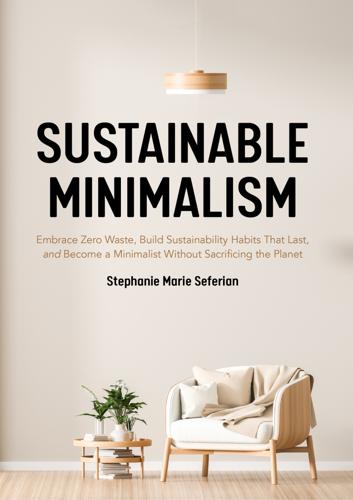
Sustainable Minimalism: Embrace Zero Waste, Build Sustainability Habits That Last, and Become a Minimalist Without Sacrificing the Planet (Green Housecleaning, Zero Waste Living)
by
Stephanie Marie Seferian
Published 19 Jan 2021
Waste is trash in oceans and garbage in landfills, yes, but waste is also uneaten food, lost manufacturing byproducts, and even pollution. Almost all environmental problems result from waste. And while the idea of a circle economy is gaining international traction as a means of wasting nothing on an international scale, I believe each of us can adopt the tenets of a circular economy within our own homes by making conscious choices aimed at reducing all forms of waste. The Three-Bin System for Waste Collection Reduce food waste and send as little to the landfill each week by utilizing three distinct bins to separate waste. Your three bins will include a recycling bin, a small compost transport container, and a bin for trash that cannot otherwise be recycled or composted. 1.
…
Carney Almroth et al., “Quantifying Shedding of Synthetic Fibersfrom Textiles; A Source of Microplastics Released into the Environment,” Environmental Science and Pollution Research 25, no. 2 (January 2018): 1191-1199. 54 Kate Carter, “Pandering to the Green Consumer,” The Guardian, August 12,2008, https://www.theguardian.com/lifeandstyle/2008/aug/13/bamboo.fabric. 55 Paul Schneider, “The Cotton Brief,” The New York Times, June 20, 1993, https://www.nytimes.com/1993/06/20/style/the-cotton-brief.html. 56 Kimberley Janeway, “Don’t Bother Using Hot Water to Wash your Laundry,”Consumer Reports, August 25, 2016, https://www.consumerreports.org/washing-machines/dont-bother-using-hot-water-to-wash-your-laundry/. 57 Helen Thompson, “The Case for Washing Clothes in Cold Water,” Smithsonian Magazine, June 1, 2015, https://www.smithsonianmag.com/smart-news/case-washing-clothes-cold-water-180955459/. 58 n.d., “The Impact of a Cotton T-Shirt,” World Wildlife Fund, January 16, 2013, https://www.worldwildlife.org/stories/the-impact-of-a-cotton-t-shirt. 59 Lisa Anne Hamilton et al., Plastic & Climate: The Hidden Costs of a Plastic Planet, (Washington, DC: The Center of International Environmental Law, 2019), 8, https://www.ciel.org/wp-content/uploads/2019/05/Plastic-and-Climate-FINAL-2019.pdf. 60 Hamilton et al., Plastic & Climate, 4. 61 Robert Kunzig, “Is a World without Trash Possible?” National Geographic,February 18, 2020, https://www.nationalgeographic.com/magazine/2020/03/how-a-circular-economy-could-save-the-world-feature/. 62 Serm Murmson, “Plastic Recycling Symbols and Meanings in the USA,”Sciencing, April 25, 2017, https://sciencing.com/plastic-recycling-symbols-meanings-usa-5977.html. 63 Melissa Pflugh Prescott et al., “Child Assessments of Vegetable Preferencesand Cooking Self-Efficacy Show Predictive Validity with Targeted Diet Quality Measures,” BMC Nutrition 5, no. 21 (March 2019). 64 Trevor Nace, “We’re Now at a Million Plastic Bottles Per Minute—91% of WhichAre Not Recycled,” Forbes, July 26, 2017, https://www.forbes.com/sites/trevornace/2017/07/26/million-plastic-bottles-minute-91-not-recycled/. 65 Laura Parker, “How the Plastic Bottle Went from Miracle Container to Hated Garbage,” National Geographic, August 23, 2019, https://www.nationalgeographic.com/environment/2019/08/plastic-bottles/. 66 Sergio Peçanha, “Congrats!

Demystifying Smart Cities
by
Anders Lisdorf
There should be one big mobility platform where all mobility could be handled, where autonomous busses, ride hailing and taxis, scooters, busses and metros are all connected and interfaced and purchased through the same interface to provide the consumer with a coherent mobility layer where new solutions and offerings can plug in seamlessly regardless of vendor; a planetary mobility fabric that optimizes on the supply and demand sides continuously to get human kind from point A to point B in the smartest possible way. Recycling – Since many resources that the city needs are if not scarce then finite, a gradual move toward recycling and the circular economy has to be made. The first step is to look at waste as a resource. Collecting waste could be done by autonomous trash robots and trucks that are electric and therefore silent. They can move around in the night, with smaller ones collecting garbage in parks and on streets emptying trash cans when they signal they are full.
…
As for mobility, we will be back to a situation where everything is close; there are no ride hailing services in space, so our cities have to locate everything close by and have the potential to build a coherent transportation solution from the start. We will end up with an interplanetary transportation fabric. Recycling will similarly not be a choice but a necessity. Every chip, circuit, poop, and boot will have to enter the circular economy and be reprocessed. Waste is not an option in space. Building smarter cities makes sense now and is good for the environment, economies, and lives of their residents today, but we might also use it as a stepping stone to prepare for the next frontier of civilization: the solar system and beyond.
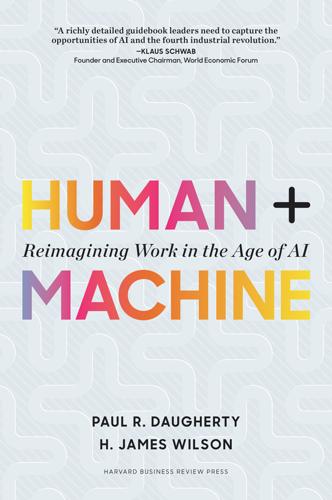
Human + Machine: Reimagining Work in the Age of AI
by
Paul R. Daugherty
and
H. James Wilson
Published 15 Jan 2018
Chapter 4 1.Phil Wainewright, “Salesforce Captures the Limits of AI in a Coca-Cola Cooler,” Diginomica, March 7, 2017, http://diginomica.com/2017/03/07/salesforce-captures-the-limits-of-ai-in-a-coca-cola-cooler/. 2.“Transitioning to a Circular Economy,” Philips, https://www.usa.philips.com/c-dam/corporate/about-philips-n/sustainability/sustainabilitypdf/philips-circular-economy.pdf. 3.Jordan Crook, “Oak Labs, with $41M in Seed, Launches a Smart Fitting Room Mirror,” TechCrunch, November 18, 2015, https://techcrunch.com/2015/11/18/oak-labs-with-4-1m-in-seed-launches-a-smart-fitting-room-mirror/. 4.“The Race for Relevance, Total Retail 2016: United States,” PwC, February 2016, http://www.pwc.com/us/en/retail-consumer/publications/assets/total-retail-us-report.pdf. 5.

Survival of the Richest: Escape Fantasies of the Tech Billionaires
by
Douglas Rushkoff
Published 7 Sep 2022
ReGen Villages, for example, is the brainchild of former game designer James Ehrlich, an entrepreneur-in-residence at Stanford and a teacher of “disaster resilience” for Singularity University. ReGen is a total solution for the creation of regenerative and resilient communities that are capable of producing their own organic food, sourcing clean water, and educating their young, all with renewable energy and in a circular economy. Ehrlich is getting some traction—at least, with fellow Singularitarians and some of the press—with his compelling renderings of people living in high-tech harmony with nature. They grow food in domes, live in solar-powered cottages nestled into the earth, eat fresh fruit in open community courtyards, and are surrounded by woods and animals.
…
Instead of telling them about my PhD or tenured professorship in digital economics, I simply glanced at the backdrop behind me on the stage and answered, “Blue.” I may have been unnecessarily snide, but I’ve become frustrated by this reception. So has anyone espousing basic economic sense to those so steeped in The Mindset that they’ve lost the ability to think outside its unidirectional logic. The principles for building a more circular economy that isn’t dependent on growth are straightforward. Keep resources and revenue recirculating through the community, and accessible to the working class. Leverage the power of mutual aid to lift up one member of the community at a time, each according to their need. Maintain independence from big employers and disinterested investors by owning businesses cooperatively with other workers.

A Life Less Throwaway: The Lost Art of Buying for Life
by
Tara Button
Published 8 Feb 2018
Lighting LED lighting is naturally longer-lasting, but the number of hours on the box is often misleading. The main cause of bulb failure is a build-up of heat, and only a few manufacturers have actively tried to solve this. The Blume bulb is designed to last a lifetime and is upgradable and recyclable, making it the first truly circular economy lightbulb. The choices for lighting fixtures are endless and lifetime warranties abound in this section, as do upcycled, antique and recycled options. There is very little wear and tear on light fixtures, so try to get them second hand and save yourself a fortune. If you’re buying new, make sure that any metal is rustproof and the whole thing is cleanable once plugged in.
…
This will go to one of three places: either it will be spent on services and experiences, such as going out for dinner more regularly and enjoying hobbies, or it will be invested in companies so that they can grow and prosper, or it will be saved. More money saved means that there will more money for banks to invest in infrastructure, sustainable power and solutions to the problems we face. The brightest companies will move towards what is known as a ‘circular economy model’, where products are made using sustainable and recycled and recyclable materials, and are designed to last as long as they can and be useful to as many people as possible. Many companies may move to the rental model, as in the ‘car club’ scene and ‘Rent the Runway’ dresses. If we start now, our economy can naturally and gradually evolve, allowing industries, companies and their associated jobs to adapt over time.

The Zero Marginal Cost Society: The Internet of Things, the Collaborative Commons, and the Eclipse of Capitalism
by
Jeremy Rifkin
Published 31 Mar 2014
What makes the IoT a disruptive technology in the way we organize economic life is that it helps humanity reintegrate itself into the complex choreography of the biosphere, and by doing so, dramatically increases productivity without compromising the ecological relationships that govern the planet. Using less of the Earth’s resources more efficiently and productively in a circular economy and making the transition from carbon-based fuels to renewable energies are defining features of the emerging economic paradigm. In the new era, we each become a node in the nervous system of the biosphere. While the IoT offers the prospect of a sweeping transformation in the way humanity lives on earth, putting us on a course toward a more sustainable and abundant future, it also raises disturbing issues regarding data security and personal privacy, which will be addressed at length in chapter 5 and in other chapters throughout the book.
…
In addition, sanctions and punishments for violating the norms and protocols are built into the governing codes, making the Commons a self-managing economic enterprise. The Commons has proven to be a relatively successful governing model in subsistence-based agricultural communities where production and consumption are primarily for use rather than exchange. They are the early archetypes of today’s circular economy. The success of the Commons is all the more impressive given the political circumstances that gave rise to them. For the most part, commons management emerged in feudal societies where powerful overlords pauperized local populations and forced them to pay tribute by either working the manorial fields or handing over part of their production in the form of a tax.
…
Yerdle doesn’t charge for each sharing transaction, but friends usually have to cover the shipping expenses. As Yerdle grows, it will allow its local networks to expand geographically, so items can be sold to strangers as well as to friends. Yerdle plans on taking a small transaction fee to cover its operational costs. The Yerdle plan, like so many others, helps advance the idea of a circular economy in which everything is recycled and reused and nothing is sent to the landfill before its time. The sustainable business logic makes perfect sense, but gets muddled when the founders try to make the case for the retailer’s buy-in. Werbach says that “if you can borrow that chain saw from the person next door, the retailer’s job is to help you with what you’re trying to do, not just sell you another chain saw.”45 Maybe . . . but likely?
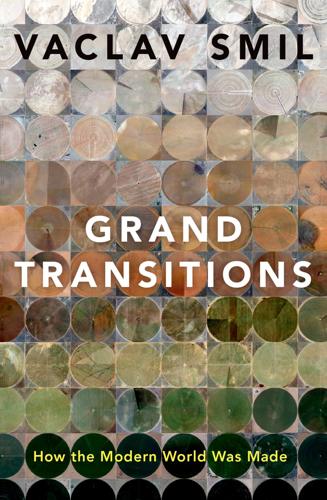
Grand Transitions: How the Modern World Was Made
by
Vaclav Smil
Published 2 Mar 2021
Even the greatest post-WWII economic downturn turned out to be just a brief dip as the first two decades of the 21st century saw substantial growth of the global economic product (70% increase in constant monies), massive gains in energy supply (primary energy consumption up by about 48%; electricity generation up by 74%); and enormous increases in the use of materials (cement and aluminum output rising 2.6-fold and steel output more than doubling). Sustainable growth and circular economy are fashionable phrases but the first notion has only tenuous links to reality of the early 21st century, and the second one is a biophysical impossibility. Any truly sustainable economy would have to run solely on renewable energies and have no material leakages. But modern economies rely on massive linear flows of energy and materials and waste large shares of mobilized resources.
…
And as already noted, global losses of applied fertilizer nitrogen (due to the combination of erosion, leaching, volatilization, and denitrification) average more than 50% of the nutrient’s initial inputs. Given the extent of our wasteful uses, a constant quest for more efficient economic activities (be it in terms of energy, mass, or residual output) must be encouraged but any claims that we could create a truly circular economy are delusionary. A high degree of global economic integration is yet another, now deeply embedded, economic reality that works against reducing energy and material inputs. Affordable intercontinental shipping (the result of inexpensive fuel, efficient engines, and massively sized vessels) reduced, even eliminated, distance as a limiting factor.
…
S., 271 Çatalhöyük, Turkey, 57 catalytic cracking, 124 catastrophism, 251–54 Ceballos, G., 255–56 cellulosic ethanol, 276 cement, 189, 247, 248f Census Bureau (US), on manufacturing sector, 177–78 centralized animal-feeding operations (CAFOs), 82–83 CH4 (methane), 112–13, 206, 240 Chad children, desired number of, 32 electrification, 139 future of food security in, 270 charcoal making, 116f Chateaubriand, François-Auguste-René, vicomte de, 7–8 cheese, lactose intolerance and, 94–95 chickens, 84, 86 children child labor, 125 infant and childhood mortality, 7–8, 15, 42, 252 nutrition and, 101–2 as old-age security, 41 China as ammonia producer, 252 consumerism, 252 generational transitions, 5–7 Han dynasty, 245 Heilbroner on, 252 inequalities, 23–24, 254–55 premodern, 2–3 summary of changes in, 260 China, agricultural and dietary transitions dietary nutrients, 98 dietary oil supply, 96–97 dietary transition, 93 famines, 100 feed crops, 83–84 fertilizer use, 290–91 food expenditures per capita, 102 food sufficiency, 246 fruit supply, 97 future food requirements and food supply, 269 leaf area gains in, 293–94 meat consumption, 92 mechanized field farming, transition to, 127 milk supply, 95 polyethylene contamination, 111 soil contamination, 110 sugar consumption, 96 China, economic transitions economic growth and development, 17, 45–46, 162–65, 163f, 166 economic inequality, 185–86 economic transition, 154 employment, 153, 171, 179 GDP growth, 161, 248–49, 294 growth rates, 159–60 household debt, 192 industrialization of, 179 manufacturing, 177, 180 material flows, 189 modernization trajectory, 160–61 premodern, lack of economic growth, 155 savings rates, 192 service sector employment, 181, 184 tourism, 196–97 traditional farming, 167 China, energy transitions air conditioners, 142–44 blast furnaces, 119–20 car electrification, 276 coal output and use, 117, 121 compound feeds, use of, 83 electrification, 139, 144–45 energy consumption, 273, 285–86 energy intensity, 150 energy sources, 117–18 material consumption, rise in, 286 motorization of, 124–25 steam-to-diesel locomotives transition, 124 wood-to-coal transition, 118 China, environmental transitions acid deposition, 229 anthropogenic land-use changes, 219–20 carbon dioxide production, 240 city growth, 210–11 croplands, 214, 216–17 deforestation and reforestation, 207, 213 forests, carbon sequestration by, 213–14 impervious surfaces, 210 large dams, 227 multicropping, 215 nitrogen efficiency, 234 ocean dead zones, impact on, 234 phosphate production, 235 plastics, pollution from, 232 soil acidification, 233 wastewater treatment, 230 wilderness area, 221 China, population transitions children, desired number of, 32 demographic burden, 56 demographic transitions, speed of, 36 fertility rates, 33, 36, 38, 40, 43 household registration system, 61–62 intranational migrations, 58–59 old-age dependency ratios, future possibilities of, 264–65 one-child policy, 36, 42, 45 per capita urban water use, 68 population aging, 264–65 population decline, 269 total dependency ratio, 45 urbanization, 61 Chittenden, Russell Henry, 97–98 Chorley, G. P. H., 157 CIMMYT (International Maize and Wheat Improvement Center), 81 circular economy, impossibility of, 284–85 cities. See also urbanization energy needs, 275 environmental improvements to, 66 large cities, eastward shift in, 62 megacities, 8–9, 46, 64, 66–69, 209–10 urban inequalities, 66 civilizational diseases, 107–9 Civil War, impact on industrial expansion, 174 Clark, Colin, 170 Clarke, Arthur C., 250 Clean Air Act (1954, England), 228–29 climate change, 13–14, 239–43 clothes washers, 142 CO2.
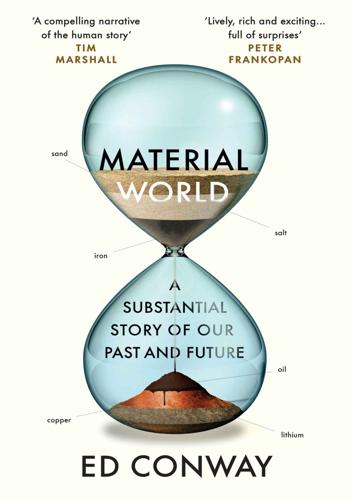
Material World: A Substantial Story of Our Past and Future
by
Ed Conway
Published 15 Jun 2023
Conversations with Barron involve dodging a barrage of dropped names (‘Yes, Elon is interested … I told Leo, Hollywood has to get on to this … Lewis wanted to do something but F1 aren’t there yet …’), but adjust for them and there is undoubtedly something exciting about the dream he is selling. ‘This is the last great extraction,’ he says. ‘We need to build batteries, but after this it’s recycling; it’s the circular economy. We don’t see ourselves as selling metals; we want to rent them. We want to support brands using recycled metals. Our position is: let’s let the science do the talking.’ To that end, the company has sponsored peer-reviewed research that shows, among other things, that while a kilogram of copper produced in a conventional mine generates 460 kilograms of waste, a kilo of copper produced from polymetallic nodules generates a mere 29 kilograms of waste.
…
Across the world, the end-of-life recycling rate – the proportion of scrap that goes on to be reused – is somewhere between 70 per cent and 90 per cent. For aluminium the rate is 42–70 per cent; for cobalt 68 per cent; for copper 43–53 per cent. For lithium it is less than 1 per cent.5 The concept of the ‘circular economy’ holds that we should try increasingly to treat waste as a kind of resource in and of itself. If the twentieth century was the era of planned obsolescence, where first motorists and then consumers of all stripes were encouraged to upgrade their products as often as possible, the coming era is, we are told, one where the priority is to dispense with disposal.
…
Some of the other recycling start-ups say they can get by without this so-called pyrometallurgical step but Umicore, which has been doing this longer than anyone else, says it’s the best option out there, and that it can recover more than 95 per cent of the copper, cobalt and nickel coming in. The lithium numbers are less impressive: over 50 per cent and rising. But even a 95 per cent rate doesn’t add up to a truly circular economy. Consider a battery in an electric car, which might last ten years. Every ten years it must be tossed back in the furnace and recycled, and each time you have to add 5 per cent of fresh materials (or more, in the case of lithium). Extrapolate that out a few decades and in a hundred years the battery has less than 60 per cent of those original raw materials left.

Reimagining Capitalism in a World on Fire
by
Rebecca Henderson
Published 27 Apr 2020
We shouldn’t be surprised that the interests that pushed climate denialism for many years are now pushing the idea that there’s nothing we can do. That’s how powerful incumbents always react to the prospect of change. Second, I am sure it can be done. We have the technology and the resources to fix the problems we face. Humans are infinitely resourceful. If we decide to rebuild our institutions, build a completely circular economy, and halt the damage we are causing to the natural world, we can. In the course of World War II, the Russians moved their entire economy more than a thousand miles to the east—in less than a year. A hundred years ago, the idea that women or people with black or brown skin were just as valuable as white men would have seemed absurd.
…
The waste industry in Norway reduces Norwegian CO2 by 7 percent, which I thought was baffling. Was that possible? We at NG collect 25 percent of all Norwegian waste and we bring 85 percent back to the industry in the form of raw materials and waste to energy. Which I thought was… incredible… I realized that our industry holds the key to achieving the circular economy—solving two global issues at the same time: the rapidly increasing global waste problem and the squeeze on the future supply of natural resources due to the projected increase in middle-class consumers around the world. Erik was acting as interim CEO for NG and interviewing candidates for the permanent position when he made the decision to apply for the job himself.

The Measure of Progress: Counting What Really Matters
by
Diane Coyle
Published 15 Apr 2025
In 2015 they announced a deal to provide Schiphol airport with Light as a Service: in this example Philips retains ownership of the bulbs and fittings, monitors and ensures the lights work, and will replace and recycle them at the end of their life. Maintenance costs are minimised, the lightbulbs are low-energy LEDs, and the estimated life of the fixtures is seventy-five years. Schiphol has lower costs—no maintenance to worry about—and can claim to be a circular economy exemplar. Frank van der De m a t e r i a l i s a t i o n 83 image 3.1. Rolls-Royce’s aeroengine factory, Derby, October 26, 2012. © Diane Coyle. Vloed, general manager of Philips Lighting Benelux, stated in the press release, “We believe that more and more forward-thinking businesses will move to a Light as a S ervice model.
…
McKinsey & Com pany. https://w ww .m ckinsey.c om /c apabilities /r isk -a nd -r esilience /o ur -i nsights /localization-of-data-privacy-regulations-creates-competitive-opportunities Pearce, J., and Qian, J.-Y. (2022). Economic impact of DIY home manufacturing of consumer products with low-cost 3D printing from free and open source designs. European Journal of Social Impact and Circular Economy, 3(2), 1–24. https://doi.org/10.13135/2704-9906/6508 Penrose, E. (1959, 1995). The theory of the growth of the firm. Oxford University Press. Philippon, T. (2019). The great reversal: How Americ a gave up on free markets. The Belknap Press of Harvard University Press. Philips. (2015).
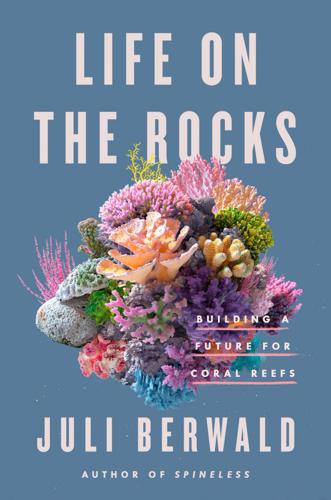
Life on the Rocks: Building a Future for Coral Reefs
by
Juli Berwald
Published 4 Apr 2022
Cozumel Coral Reef Restoration Program, https://www.ccrrp.org/. Jamaica’s Seascape Caribbean, https://www.seascapecarib.com/. Fragments of Hope, Belize, http://fragmentsofhope.org/. GO TO NOTE REFERENCE IN TEXT pillars of marine stewardship: “Moving towards a Circular Economy,” Wave of Change, 2021, https://waveofchange.com/action-line/circular-economy/. “Promoting Responsible Seafood,” Wave of Change, 2021, https://waveofchange.com/action-line/responsible-seafood/. “Improving Coastal Health,” Wave of Change, 2021, https://waveofchange.com/action-line/coastal-health/. DeMarco Williams, “What Makes Iberostar’s Sustainability Charge So Special,” Forbes, October 29, 2018, https://www.forbes.com/sites/forbestravelguide/2018/10/29/what-makes-iberostars-sustainability-charge-so-special/#352ceb08baa2.

This Is Not a Drill: An Extinction Rebellion Handbook
by
Extinction Rebellion
Published 12 Jun 2019
While many wrongs were enacted against black people under President Roosevelt’s New Deal, nevertheless his administration played a critical role in preventing the slide into fascism that so blighted continental Europe at that time. Of course, while there will be similarities, there will also be different, and bigger, challenges. This time, we must use every fiscal and regulatory mechanism we have to encourage and support the shift to the so-called ‘circular economy’. That means cuts in consumption, more recycling and drastic improvements to resource-use efficiency – especially of our leaky, Victorian housing stock. We must also abandon the fetish of ‘growth’ – a fetish first devised by neoliberal economists at the OECD and the Financial Times in the 1960s.
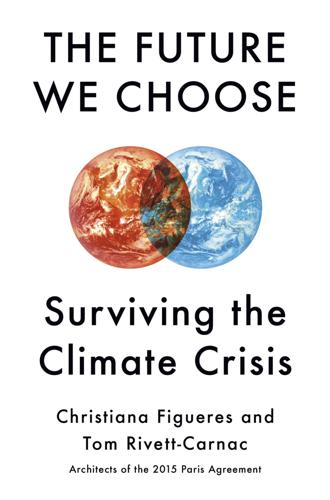
The Future We Choose: Surviving the Climate Crisis
by
Christiana Figueres
and
Tom Rivett-Carnac
Published 25 Feb 2020
But the fact is, nothing is permanent; everything is always changing, no matter how much we insist on standing still, hanging on to fleeting moments. And making desired change always demands going in an intentional direction. Our new intentional direction must move us beyond defeatism to optimism, beyond extraction toward regeneration, beyond linear toward circular economies, beyond individual benefit toward the common good, beyond short-term thinking toward long-term thinking and acting. By cultivating the three mindsets, we give clearer, stronger direction to our lives and to our world, setting the necessary foundation for us to collectively co-create the world we want.

Team Human
by
Douglas Rushkoff
Published 22 Jan 2019
During the Renaissance, the primacy of the city-state of people was surrendered to the politically determined nation-state, an invented concept. The transition from cities to nations transformed people from members of a community to citizens of a state. Localities were disempowered—along with their currencies and circular economies—as resources and attention were directed upward, first to monarchs and then to corporations. Our local peer-to-peer interactions, solidarity, and collective concerns were replaced by a large-scale, abstracted democratic process that couldn’t help but become more like the expression of brand affinities than of human needs.
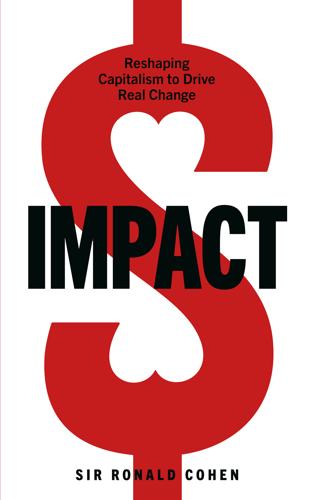
Impact: Reshaping Capitalism to Drive Real Change
by
Ronald Cohen
Published 1 Jul 2020
amt=9690000&comp=weight&unit=tns&searchTerm= 9690000+tons 110 https://news.globallandscapesforum.org/32098/ikea-assembles-plan-to-reduce-emissions-in-the-atmosphere-by-2030/ 111 Ibid. 112 https://www.ft.com/content/da461f24-261c-11e9-8ce6-5db4543da632 113 Ibid. 114 https://www.ft.com/content/da461f24-261c-11e9-8ce6-5db4543da632 115 Ibid. 116 https://www.dwell.com/article/ikea-gunrid-air-purifying-curtains-81cf8714 117 https://www.ikea.com/ms/en_AU/this-is-ikea/people-and-planet/sustainable-life-at-home/index.html 118 http://highlights.ikea.com/2017/circular-economy/index.html 119 https://www.fastcompany.com/90236539/ikea-is-quickly-shifting-to-a-zero-emissions-delivery-fleet 120 https://www.consciouscapitalism.org/heroes/b-lab-founders 121 http://b-analytics.net/content/company-ratings 122 George Serafeim, DG Park, David Freiberg, T. Robert Zochowski “Corporate Environmental Impact: Measurement, Data and Insights” Harvard Business School Working Paper, Forthcoming March 2020.

What If We Get It Right?: Visions of Climate Futures
by
Ayana Elizabeth Johnson
Published 17 Sep 2024
Another thing scientists can do is acknowledge that there are always going to be trade-offs, and to think hard about how we present those to people. Because solar panels are not going to manufacture themselves. Wind turbines are made out of stuff. Electric car batteries are made out of stuff that has to be taken out of the ground, at least right now, because we don’t have a circular economy for that yet. Ayana: It’s not like we switch to renewables and then we get to use as much electricity as we want. Because of this physical limitation on building things and the impacts of mining, et cetera, we still need to conserve energy. Kate: The second law of thermodynamics says that there is not a perpetual motion machine.
…
– Globally, only 7.2% of all materials are reused, and only 9% of plastic waste is truly recycled—actually turned into new things. – Data centers in the U.S. consumed about 2.5% of the country’s total electricity demand in 2022, and that is expected to triple to 7.5% by 2030. 10 Possibilities + A circular economy (based on the principles of using less, longer, and again) could reduce the demand for virgin material extraction by around 30%, reduce associated greenhouse gas pollution by almost 40%, and create 6 million jobs globally. + About 75% of the infrastructure that will be in place in 2050 has yet to be built.

Ours to Hack and to Own: The Rise of Platform Cooperativism, a New Vision for the Future of Work and a Fairer Internet
by
Trebor Scholz
and
Nathan Schneider
Published 14 Aug 2017
In contrast, open design communities, such as these of the Wikispeed car, the Wikihouse, and the RepRap 3D printer, do not have the same incentives, so the practice of planned obsolescence is alien to them. Fifth, and relatedly, open cooperatives reduce waste. The lack of transparency and penchant for antagonism among closed enterprises means they will have a hard time creating a circular economy—one in which the output of one production process is used as an input for another. But open cooperatives can create ecosystems of collaboration through open supply chains. These chains can enhance the transparency of the production processes and enable participants to adapt their behavior based on the knowledge available in the network.
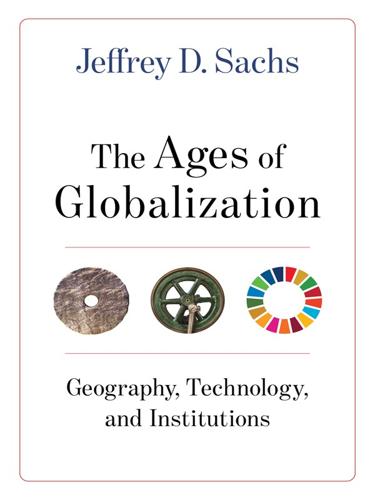
The Ages of Globalization
by
Jeffrey D. Sachs
Published 2 Jun 2020
With nearly 8 billion people on the planet, and with population projected to rise to around 9.7 billion by 2050, and the massive environmental dangers ahead—climate change, loss of biodiversity, mega-pollution—we have not yet shown that we can sustain the progress to date. To do so will require not only stabilizing the global population but also ending the massive environmental harms we are now causing. We must still make the transitions to renewable energy, sustainable agriculture, and a circular economy that safely recycles its wastes. Until those transitions are accomplished, Malthus’s specter will continue to loom large. The Gradual Transformation to Urban Life Across the ages of globalization, we have seen not only an increase in scale—of the human population, of economic production, and of politics—but also a decisive shift from rural to urban life.
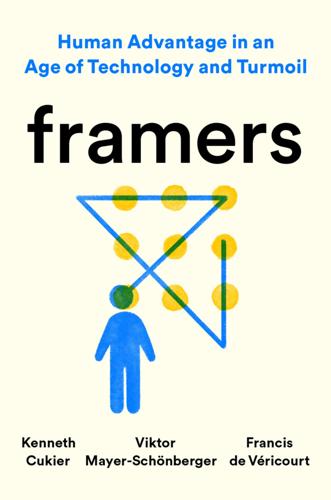
Framers: Human Advantage in an Age of Technology and Turmoil
by
Kenneth Cukier
,
Viktor Mayer-Schönberger
and
Francis de Véricourt
Published 10 May 2021
Lo, Adaptive Markets: Financial Evolution at the Speed of Thought (Princeton, NJ: Princeton University Press, 2017). Reframing the economy: For a fascinating reframing of economics through the lens of Claude Shannon’s information theory, see: George Gilder, Knowledge and Power: The Information Theory of Capitalism and How It Is Revolutionizing our World (Washington, DC: Regnery, 2013). The idea of a “circular economy” is another example, viewing products in terms of a life cycle. On being open-minded and curious: A good resource is David Epstein, Range: Why Generalists Triumph in a Specialized World (New York: Riverhead, 2019). On Rousseau’s social contract: Jean-Jacques Rousseau, The Social Contract, trans.

Badvertising
by
Andrew Simms
But a world with at least much less such advertising (if it needs spelling out, we don’t see a problem with, say, a grocery store advertising carrots and potatoes for sale at a certain price), and no advertising of products that amount to the promotion of our own ultimate self-destruction, raises other questions worth a look. With the green economy of renewable energy, new companies in the circular economy, and new models based on repairing, sharing, reusing and recycling there should be no shortage of new advertisers able to step up to replace the polluters, just as others stepped in when tobacco was ruled out. But there are other ways forward too, by choosing advertising-free social media and online platforms, and by developing and expanding the economic models they use.
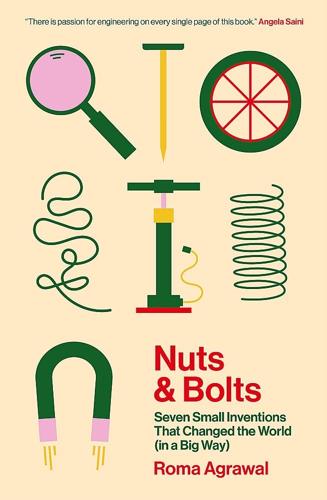
Nuts and Bolts: Seven Small Inventions That Changed the World (In a Big Way)
by
Roma Agrawal
Published 2 Mar 2023
Strowger: The Undertaker Who Revolutionized Telephone Technology’. https://www.sparkmuseum.org/almon-b-strowger-the-undertaker-who-revolutionized-telephone-technology/. Strowger, A. B. ‘Automatic Telephone Exchange’. United States Patent Office, US447918A, issued 10 March 1891. Susmagpro. ‘Recovery, Reprocessing and Reuse of Rare-Earth Magnets in the Circular Economy’. https://www.susmagpro.eu/. Takayanagi, Kenjiro. ‘1926 Kenjiro Takayanagi Displays the Character on TV’. [NHK Blog Post], 2002. Telephone Collectors International Inc. ‘TCI Library’. https://telephonecollectors.info/index.php/browse?own=0. Technology Connections. ‘Lines of Light: How Analog Television Works’.

The Entrepreneurial State: Debunking Public vs. Private Sector Myths
by
Mariana Mazzucato
Published 1 Jan 2011
‘Business Growth and Innovation: The Wider Impact of Rapidly-Growing Firms in UK City-Regions’. NESTA research report, October. Massey, D., P. Quintas and D. Wield. 1992. High-Tech Fantasies: Science Parks in Society, Science and Space. London: Routledge. Mathews, J. et al. 2011. ‘China’s Move to a Circular Economy as a Development Strategy’. Asian Business and Management 10, no. 4: 463–84. Mazzoleni, R. and R. R. Nelson. 1998. ‘The Benefit and Costs of Strong Patent Protection: A Contribution to the Current Debate’. Research Policy 27, no. 3: 273–84. Mazzucato, M. 2000. Firm Size, Innovation and Market Structure: The Evolution of Market Concentration and Instability.
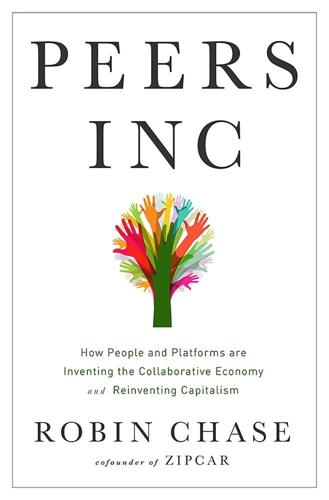
Peers Inc: How People and Platforms Are Inventing the Collaborative Economy and Reinventing Capitalism
by
Robin Chase
Published 14 May 2015
Jules concluded, “I know we are capturing some pretty massive mainstream sentiments around empowerment, making, entrepreneurship, and a forceful rejection of the same-old-ways big businesses have operated.” The Grommet is still probably too consumption-oriented for my taste. It hasn’t embraced the circular economy; most of the stuff purchased will still find its way into landfills eventually and not be used up. But The Grommet does embody the values that I think we need to embrace and which the Peers Inc model excels at: giving consumers a much better understanding of the supply chain, giving them more visibility into the products they are buying, letting them make purchases based more on values they care about and less on marketing shortcuts and retail distribution chains that are making the decisions for them.

The Wood Age: How One Material Shaped the Whole of Human History
by
Roland Ennos
Published 18 Feb 2021
There is a rapid expansion of green woodworking, carpentry, and wood turning that is producing furniture, oak buildings, and all manner of the useful tools and items that would have been familiar to our ancestors. The woodlands are starting to act once again as the foundations of a small-scale circular economy. Meanwhile, the rewilding movement is starting to reclaim large areas of marginal farmland for natural forests and scrub. Trials are showing that this can have huge benefits even in the heavily modified countryside of Britain. On a relatively small scale, discontinuing plowing of heavy clay soils in lowland areas, as at the Knepp Estate in Sussex, England, has allowed the regrowth of scrub and deciduous woodland, while stocking the land with low densities of cattle and pigs is re-creating the wood pasture of medieval times.

How to Spend a Trillion Dollars
by
Rowan Hooper
Published 15 Jan 2020
Of course, we don’t know what microgravity will do to our musculature and bone density or how we will cope long-term, but ... we’ll be able to leap like gibbons. We will practically be able to fly on the Moon. $ $ $ GOING TO THE MOON – more than that, settling on the Moon – will hugely increase human knowledge. We will learn to live in a sustainable way with a near-circular economy and without wasting stuff: recycling materials, using renewable energy, being efficient with water and oxygen; building safe homes, mining resources from the polar regions and eventually from asteroids; installing scientific equipment on the far side and performing experiments and making observations of the universe that are impossible from Earth.

The Truth Machine: The Blockchain and the Future of Everything
by
Paul Vigna
and
Michael J. Casey
Published 27 Feb 2018
It’s similar to the principle, explored above, of using price signals to optimize a solar microgrid. If tokens allow us to set prices for goods and services for which there was previously no alternative source of demand, producers might be able to make much better resource decisions. This is why many people believe that the concept of a “circular economy”—where there is as much recycling as possible of the energy sources and materials in production—will hinge on the transparency and information flows that blockchain systems allow. The principal challenge remains scaling. Open-to-all, permissionless blockchains such as Bitcoin’s and Ethereum’s simply aren’t ready for the prime time of global trade.

Not the End of the World
by
Hannah Ritchie
Published 9 Jan 2024
Studies also show that we will have enough lithium, nickel, and other minerals.29 We won’t run out. This is especially true when we consider the potential of recycling: many of the minerals we’ll use in panels, turbines and batteries can be refurbished into new products. In this way we could set up a circular economy where we continually reuse these materials without increasing demand for more. We do need to be careful about where we get these minerals from, and how they are extracted. Some deposits lie under areas that we want to protect for ecological reasons, or because they overlap with indigenous lands.
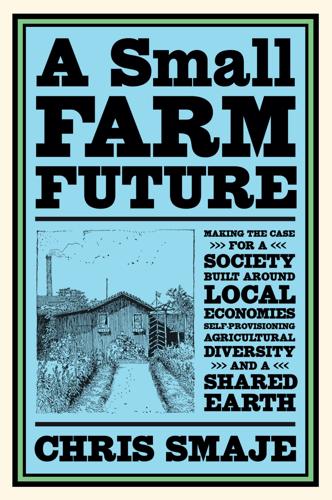
A Small Farm Future: Making the Case for a Society Built Around Local Economies, Self-Provisioning, Agricultural Diversity and a Shared Earth
by
Chris Smaje
Published 14 Aug 2020
Perhaps the enthusiasm for commons in alternative economic thinking arises more from a commitment to human solidarity in the face of contemporary crises and the cold workings of modern property markets, and less from a detailed interest in how commons practically work. I readily endorse that commitment to human solidarity, but I worry that contemporary interest in the collaborative commons, circular economies, and open source solutions sometimes overplays an enthusiasm for collaborative work simply because it is collaborative, at the expense of carefully analysing whether it generates successful long-term social relations. Usufruct and the Small Proprietor Many of us today live surrounded by our personal possessions in small urban residential units.

Number Go Up: Inside Crypto's Wild Rise and Staggering Fall
by
Zeke Faux
Published 11 Sep 2023
His crypto exchange, Bitfinex, had promised to raise the money to build Bitcoin City with a special Bitcoin bond offering. But what was in it for Devasini? * * * — MY FIRST STOP was El Zonte, the beach town where the Bitcoin experiment started. In 2019, a surfer from San Diego started handing out small amounts of Bitcoin to locals in the hopes of creating what he called a “Bitcoin circular economy.” His supposed success was cited by Bukele as inspiration for the national Bitcoin policy. El Zonte had been swarmed by Bitcoin influencers, travel bloggers, and TV crews, who dubbed it Bitcoin Beach. Bitcoiners liked to tell me that the town’s adoption of Bitcoin was a crucial proof of concept, a first step on the cryptocurrency’s inevitable path to global acceptance.
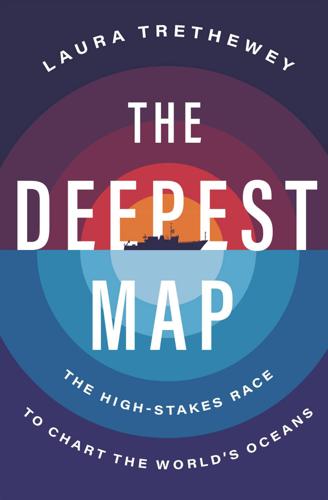
The Deepest Map
by
Laura Trethewey
Published 15 May 2023
It is also home to microbial communities that play a little-understood role in cycling carbon through the ecosystem.68 If large tracts of seafloor are mined over long periods of time, there could be serious implications for mitigating climate change as well.69 In 2022, thirty ocean experts published a paper voicing their concerns about the unknown impacts of deep-sea mining, noting that changing climate scenarios and extensive mining operations could make the damage exponentially severe.70 Simply put, if we were to lose or even diminish the ocean’s ability to sequester or cycle carbon at this delicate moment in time, when the international community is already struggling to lower its carbon emissions, we may risk tipping the scales toward climatic chaos. Rather than ending resource extraction and sustaining the circular economy, deep-sea mining appears to swap one form of extraction for another. The Metals Company, along with its Swiss partner Allseas, is in the midst of converting a mega drill ship once owned by the Brazilian oil corporation Petrobras to a nodule collector.71 Some of the same technology and operating procedures developed by the offshore oil and gas industry will simply be transferred to deep-sea mining.72 The mining ships will run on heavy fuel oil during their long transits to and from remote sites and during heavy extraction periods in the middle of the Pacific.73 No one can say exactly how many emissions deep-sea mining might produce because commercial extraction hasn’t begun yet, but one hypothetical operation in the Pacific producing 3 million dry tons of manganese nodules could emit up to 482,000 tons of CO2,74 equivalent to the emissions produced by the energy use of 55,079 American homes in one year.75 The profits to be gained from this experimental new industry do not seem all that worth it.
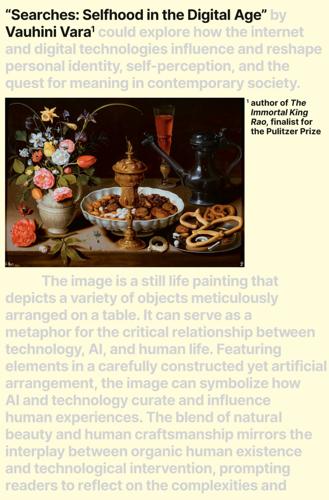
Searches: Selfhood in the Digital Age
by
Vauhini Vara
Published 8 Apr 2025
Fewer free riders. With equal access to food, water, medicine, education, birth control, and no natural disasters, we would have a chance to start over. No religion, too. I just want war to be impossible. Beautiful, peaceful, quiet, not based on extractive technologies, but with a circular economy and Rights of Nature celebrated. Other living things will have more power than us. Population is not divided by countries or borders, but organized in terms of shared interests, missions and modes of care. The earth begins to heal itself, and the world’s populations are kinder, less cruel, more centered on collective care.

The Coming Wave: Technology, Power, and the Twenty-First Century's Greatest Dilemma
by
Mustafa Suleyman
Published 4 Sep 2023
Their process is essentially low-energy, low-waste bio-manufacturing at industrial scale, built on AI and biotech. Another company, LanzaTech, harnesses genetically modified bacteria to convert waste CO2 from steel mill production into widely used industrial chemicals. This kind of synthetic biology is helping to build a more sustainable “circular” economy. Next-generation DNA printers will produce DNA with an increasing degree of precision. If improvements can be made in not only expressing that DNA but then using it to genetically engineer a diverse array of new organisms, automating and scaling the processes, a device or set of devices could, theoretically, produce an enormous range of biological materials and constructions using only a few basic inputs.
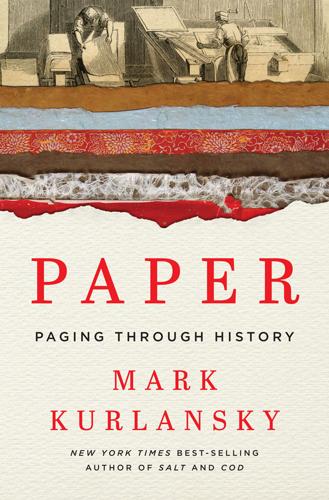
Paper: A World History
by
Mark Kurlansky
Published 3 Apr 2016
You should avoid wastefulness.” What worries the World Wildlife Fund is that the amount of land available for tree farming might not be able to keep up with the demand for paper. “There is a growing population,” said Neyroumande. “Where are we going to grow our crop? The planet is not big enough. We need a circular economy so that we use everything. If we made all our paper from forest the planet is not big enough.” According to a World Wildlife Fund study, paper use will triple by the year 2050 because of increasing population. Most people in the paper industry, however, do not find this statistic credible. It could happen, but there is no way to know.
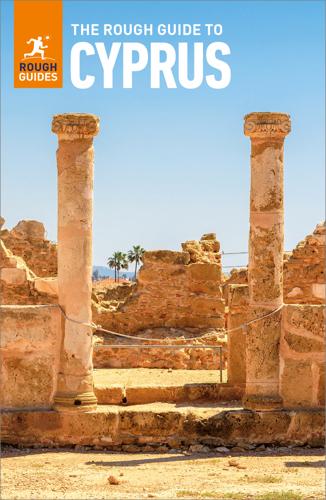
The Rough Guide to Cyprus
by
Rough Guides
Published 2 Feb 2025
SUPPORT LOCAL CRAFTSMANSHIP Both young and experienced artists have dedicated their work to Cyprus’ traditional handicrafts, yet the artist's life is a tough one when bills depend on your own two hands. There are plenty of art studios and shops selling handmade, Cyprus-made art which make the perfect souvenir and buying direct supports the local circular economy. On Ermou Street in Lefkosia, and the old town in general, you will find several contemporary artists working with traditional techniques in new ways. For a taste of Cyprus-themed art, head to the Cyprus Handicraft Centre shop, with branches in most of the big cities, and browse its collection made by local artisans that celebrates the island’s history and heritage.

Connectography: Mapping the Future of Global Civilization
by
Parag Khanna
Published 18 Apr 2016
“Remaking a Neglected Megacity: A Civic Transformation in Lagos State, 1999–2012.” Princeton Project on Innovations for Successful Societies, July 2014. Kurlantzick, Joshua. Democracy in Retreat: The Revolt of the Middle Class and the Worldwide Decline of Representative Government. Yale University Press, 2014. Lacy, Peter and Jakob Rutqvist. Waste to Wealth: The Circular Economy Advantage. New York: Palgrave Macmillan, 2015. Lake, David. “Beyond Anarchy: The Importance of Security Institutions.” International Security 26, no. 1 (Summer 2001). Lambert, Douglas M., James R. Stock, and Lisa M. Ellram. Fundamentals of Logistics. McGraw-Hill, 1998. Landes, David F. The Wealth and Poverty of Nations: Why Some Are So Rich and Some So Poor.
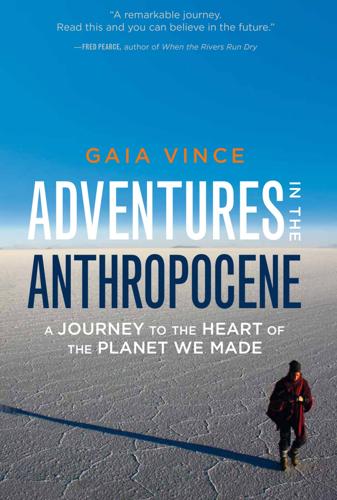
Adventures in the Anthropocene: A Journey to the Heart of the Planet We Made
by
Gaia Vince
Published 19 Oct 2014
The US carpet manufacturer Interface, for example, which is the world’s biggest producer of floor coverings, is aiming for zero carbon emissions through closed-loop manufacture. The company’s founder Ray Anderson has promised to eliminate any negative impacts they have on the environment by 2020. In a circular economy – in contrast to the linear manufacturing route: mining materials, fabricating, selling, throwing them away – products would be more easily disassembled, so that the resources can be recovered and used to make new products, keeping them in circulation. A report by McKinsey into the idea found that the benefits to Europe’s economy alone could be $630 billion, based on cycling just 15% of materials in 48% of manufacturing and just one cycle.
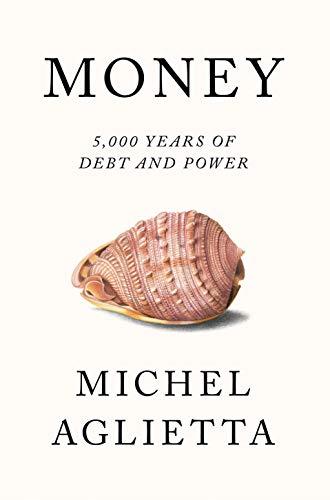
Money: 5,000 Years of Debt and Power
by
Michel Aglietta
Published 23 Oct 2018
The member states are not themselves able to take on this responsibility, caught up as they are in the European obligation to clean up their budgets. The combination of climate emergency and the threat of stagnation offers the EU countries the opportunity to develop a common policy able to feed investment across a vast terrain, ranging from energy to transport, renovating buildings and regenerating territory through the circular economy. Whether this means establishing a European treasury or developing the existing European budget, the essential thing is to arrive at a fiscal union that stands above the banking union that is on its way to being realised today. The Incompleteness of the Euro A banking union, complemented by an eventual union of capital markets, would allow the unification of the European financial space.
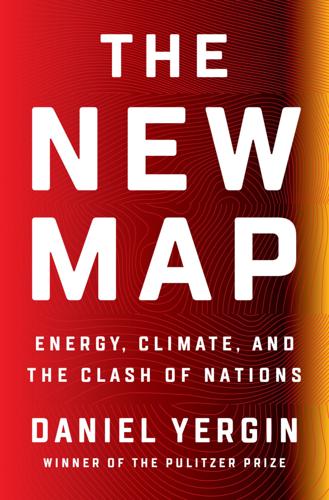
The New Map: Energy, Climate, and the Clash of Nations
by
Daniel Yergin
Published 14 Sep 2020
A growing movement focuses on limiting the use of plastic straws and single-use plastic bags, especially owing to ocean pollution and the debris washing up on beaches. In Washington, D.C., “straw cops” hand out fines to restaurants that covertly use plastic straws, which are now banned. Recyclability to replace single-use plastics has become a priority. This is seen as part of the “circular economy,” where products are reused, recycled, or remade at the end of their lives—instead of going into landfills.5 But the plastic waste problem is largely not in the developed world. The United States generates less than 1 percent of the plastic waste in oceans. About 90 percent of river-sourced plastic pollution in the oceans comes from uncontrolled dumping into ten rivers in Asia and Africa, which, if properly managed, could dramatically reduce the wastage.
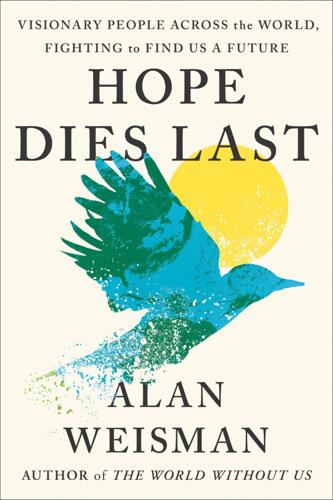
Hope Dies Last: Visionary People Across the World, Fighting to Find Us a Future
by
Alan Weisman
Published 21 Apr 2025
Maybe we have to invent a harvesting machine to get enough kilos per hectare to make it viable. Most important for me is that this project is a way of looking at the sea in the future. It’s the chance for planting marine gardens, having different diversified foods that require people to maintain the environment and create a circular economy.” He quoted what later they found printed in their menus: “Why is our planet called Earth when three-fourths of it is covered with water?” He added, “What I want now is that you enter into our dream. I will generate sensations, textures, flavors, new elements in your mouth that you don’t need soil to tell you.

The Climate Book: The Facts and the Solutions
by
Greta Thunberg
Published 14 Feb 2023
But we must all do everything we can to decarbonize industry, taking steps which include using next-to-zero-carbon fuels to replace fossil fuels and implementing more efficient production processes to reduce the impact of everything we make. Above all, we need to consume less, derive economic value in different ways and replace the constant throughput of materials and products with a circular economy. / 4.15 The Technical Hitch Ketan Joshi Spend even a moment looking over the climate and sustainability documents of the world’s high-emitting industries and you will be met with a wall of content that tries to bully you into feeling optimistic. An onslaught of glossy PDFs packed with stock photography of warmly smiling engineers and very serious businesspeople gives you the impression that there is a plan for the future and that high-emitting industries are very much in control.

Aftershocks: Pandemic Politics and the End of the Old International Order
by
Colin Kahl
and
Thomas Wright
Published 23 Aug 2021
Stimulus and recovery funding can either reinforce the dangerous climate status quo or provide the United States and other nations enormous opportunities to lean into a “green recovery.” Investing in renewable energy such as solar and wind power; technology and infrastructure for low- and zero-emission vehicles, aviation, trains, and ships; the promotion of “circular economy” models that drastically reduce resource use and eliminate waste; low-carbon retrofitting and construction; urban redesign; new programs for forest conservation, ecosystem restoration, and sustainable agriculture; and projects to enhance the climate resilience of vulnerable communities—all of this is a potential win-win.

Valley of Genius: The Uncensored History of Silicon Valley (As Told by the Hackers, Founders, and Freaks Who Made It Boom)
by
Adam Fisher
Published 9 Jul 2018
Jamis MacNiven: Just before the crash, John Mumford at Crosspoint Ventures, who had raised a billion-dollar fund, said, “You know, I can’t responsibly invest, so I am not going to do my fund, I am going to give my investors their money back.” And all these other VCs are going, “No! No! You can’t give the money back! That wrecks the whole game!” That’s when the money dried up and the ideas stopped and everything ground to a halt. Chris Caen: Also, people started realizing that it was kind of a circular economy. That it was the VCs funding companies that invested in other companies that were bought by other companies… Jeff Rothschild: I was skeptical about the valuation of these companies, because, you know, I thought about it and said, “Well, the only way that they could continue to be this valuable is if other people were acquiring them, and that can’t go on forever, you eventually don’t have any more bigger fish.”

Growth: From Microorganisms to Megacities
by
Vaclav Smil
Published 23 Sep 2019
Ward et al. (2016, 10) confirmed this truism when they used historical data and modeled projections to conclude “that growth in GDP ultimately cannot plausibly be decoupled from growth in material and energy use, demonstrating categorically that GDP growth cannot be sustained indefinitely.” This makes it highly misleading to advocate any growth-oriented policies assuming that such a decoupling, and continued GDP growth, is possible. And it is similarly misleading to talk about any imminent practice of circular economy. Modern economies are based on massive linear flows of energy, fertilizers, other agrochemicals, and water required to produce food, and on even more massive energy and material flows to sustain industrial activities, transportation, and services. Circularization of the two key flows is impossible (reusing spent energy would require nothing less than abolishing entropy; reusing water used in cropping would require the capture of all evapotranspiration and field runoff), and (with the exception of a few metals in some countries) high-intensity (>80% of total flows), mass-scale recycling of materials (above all construction waste, plastics, and electronic waste) remains elusive.